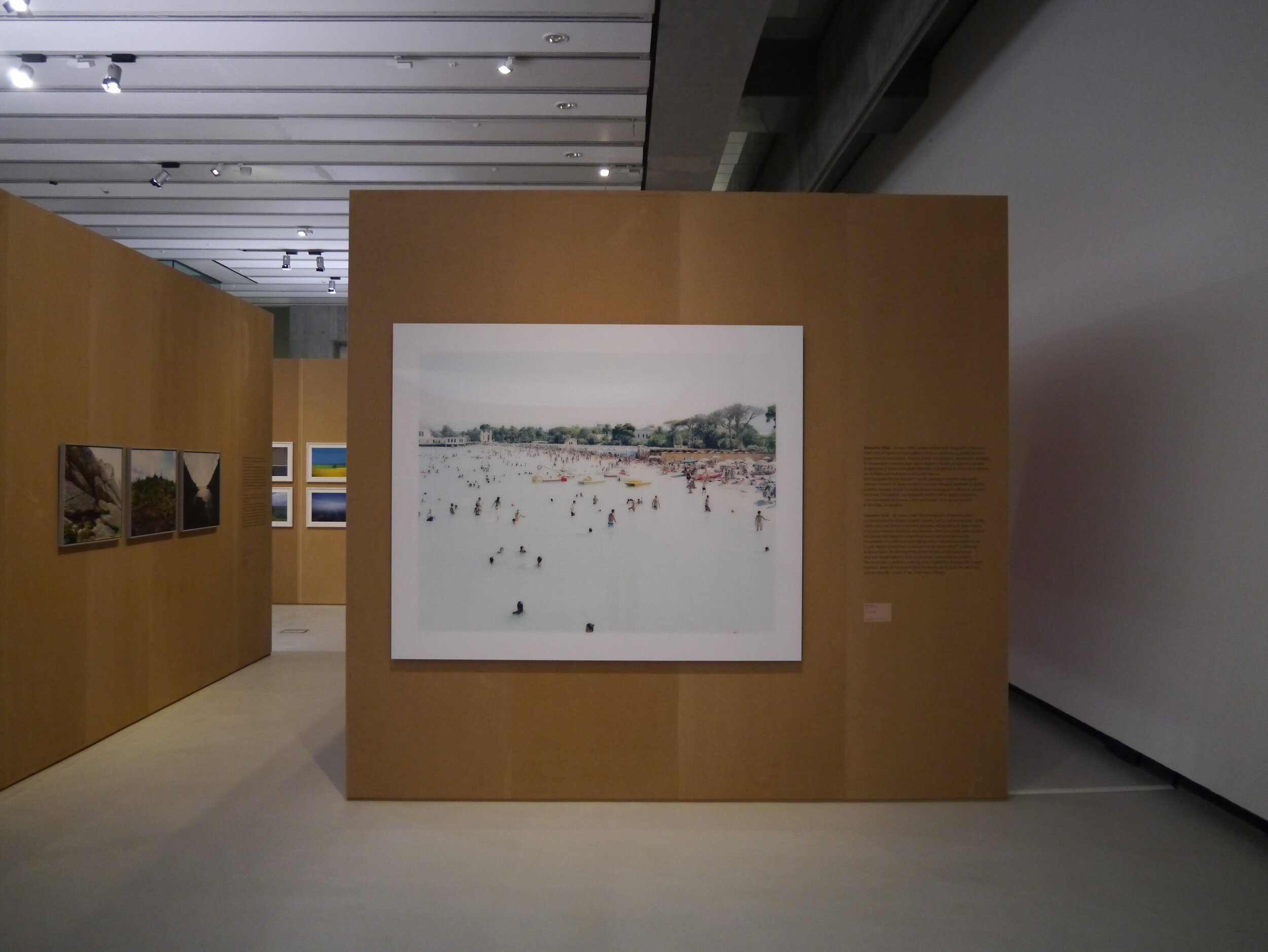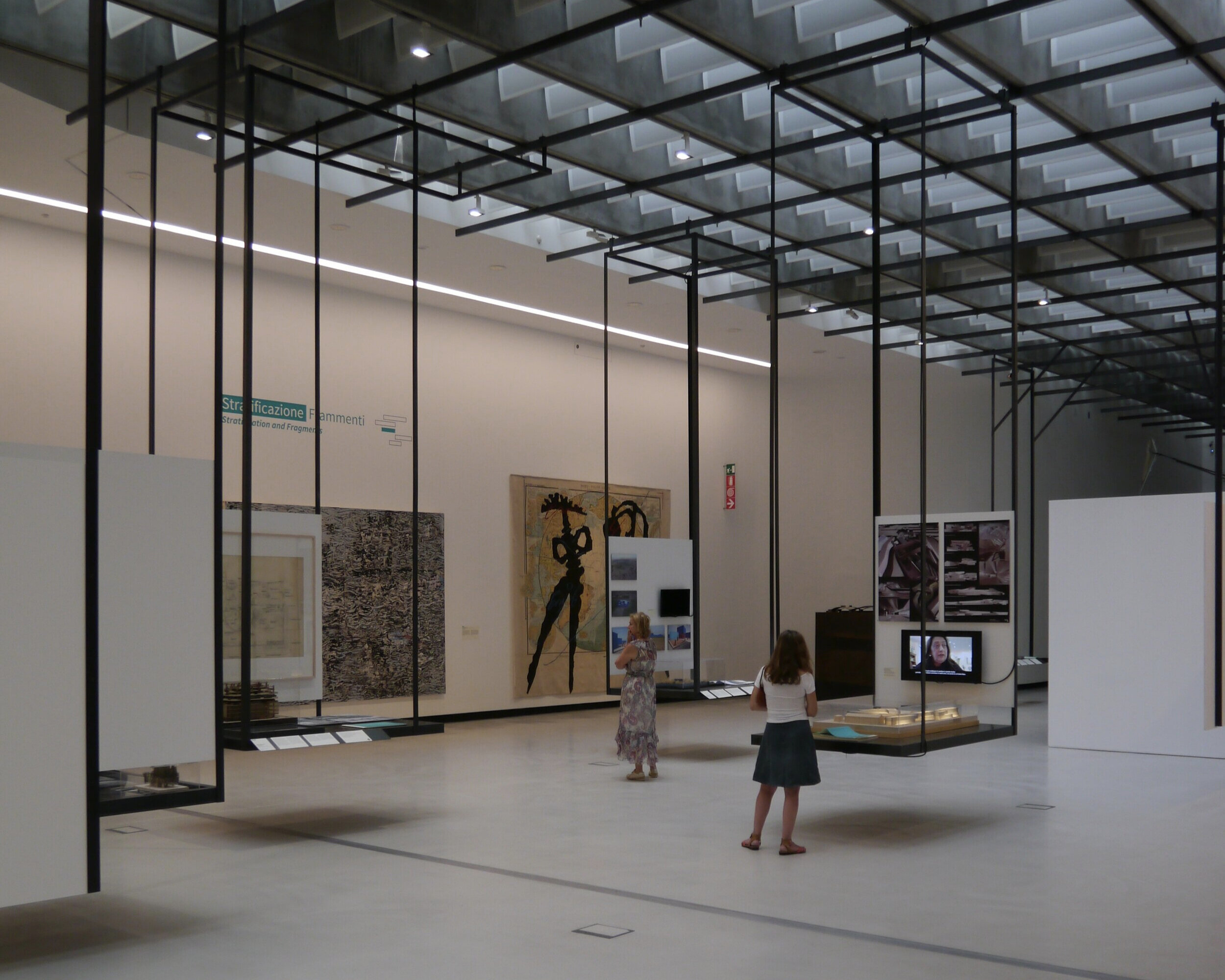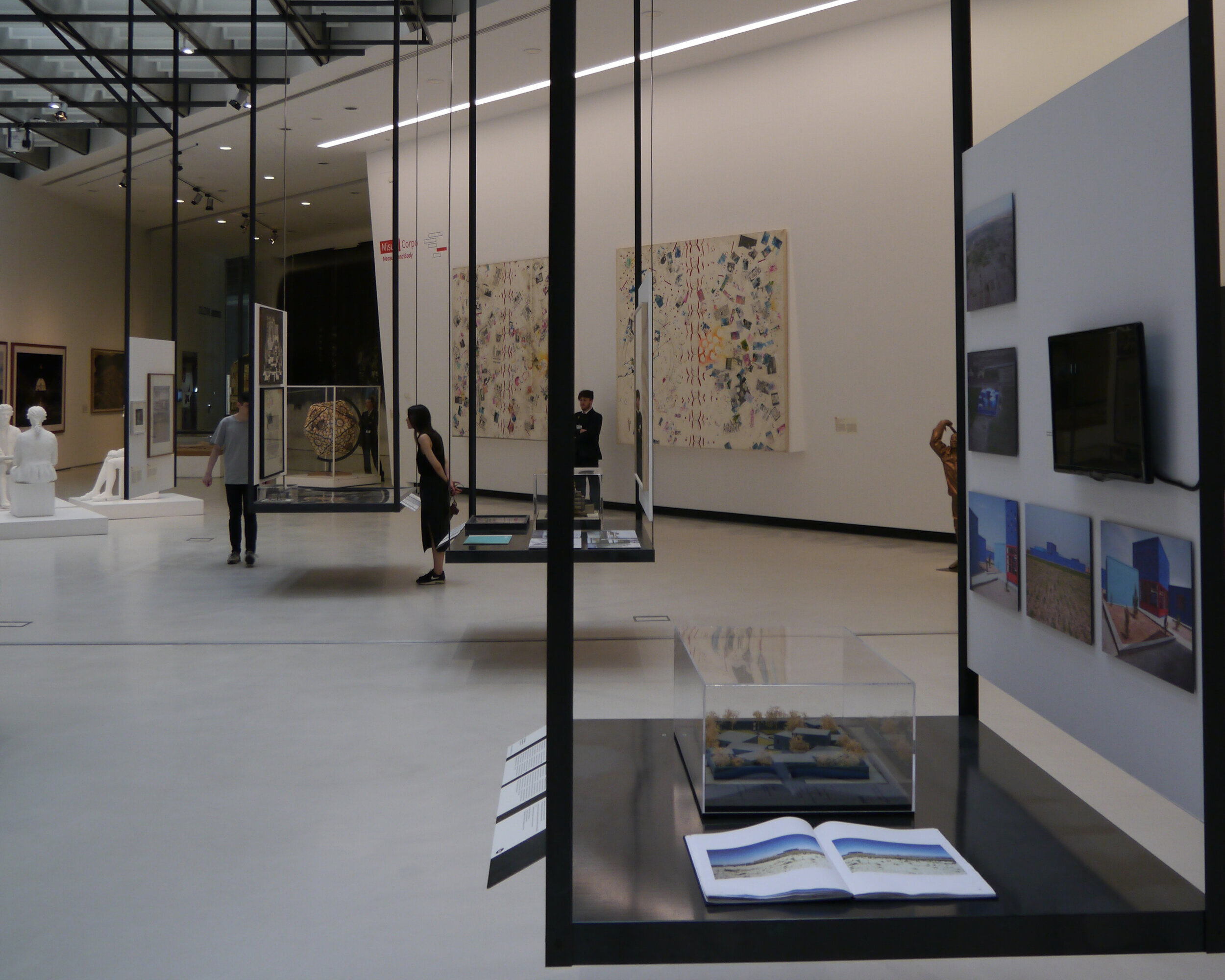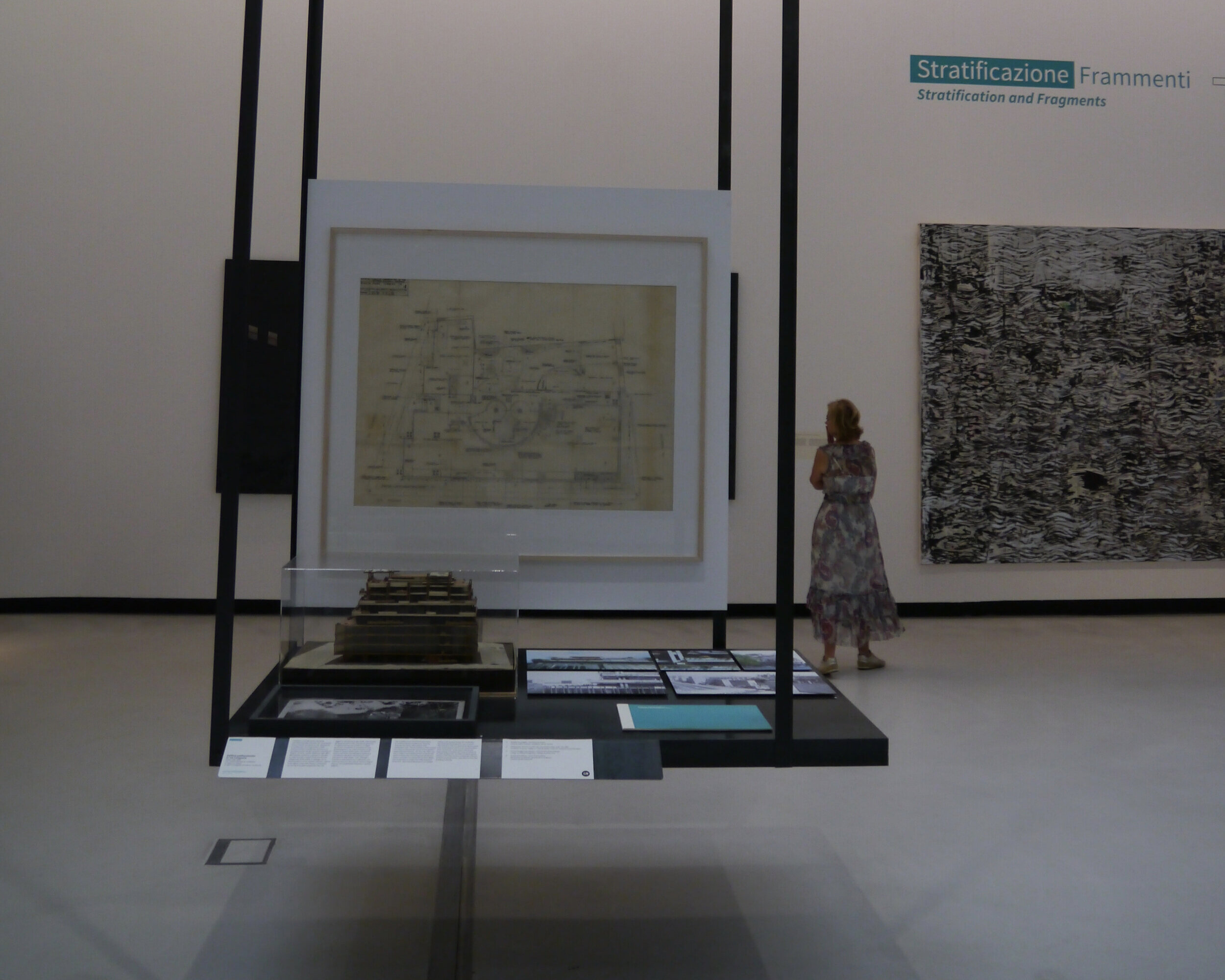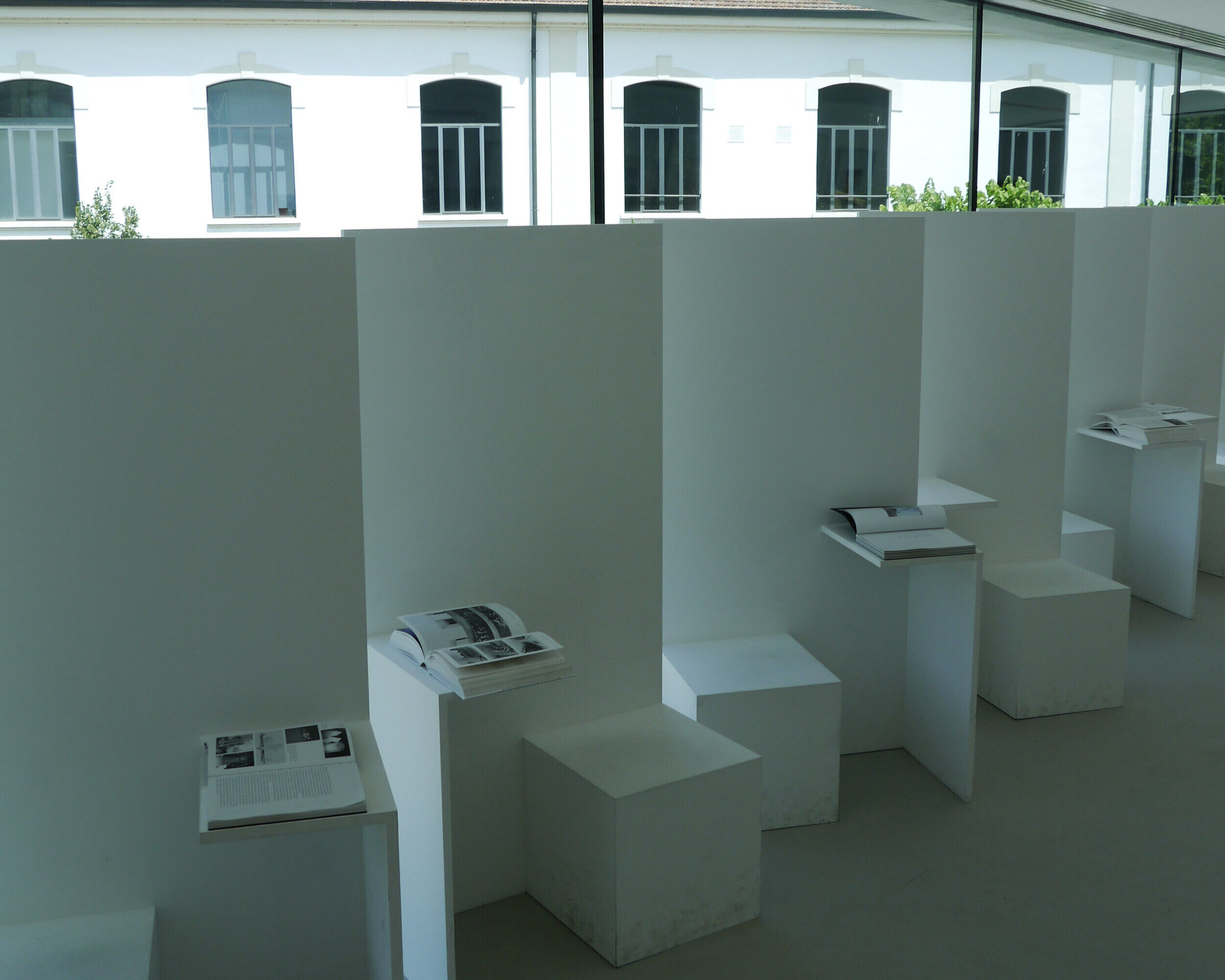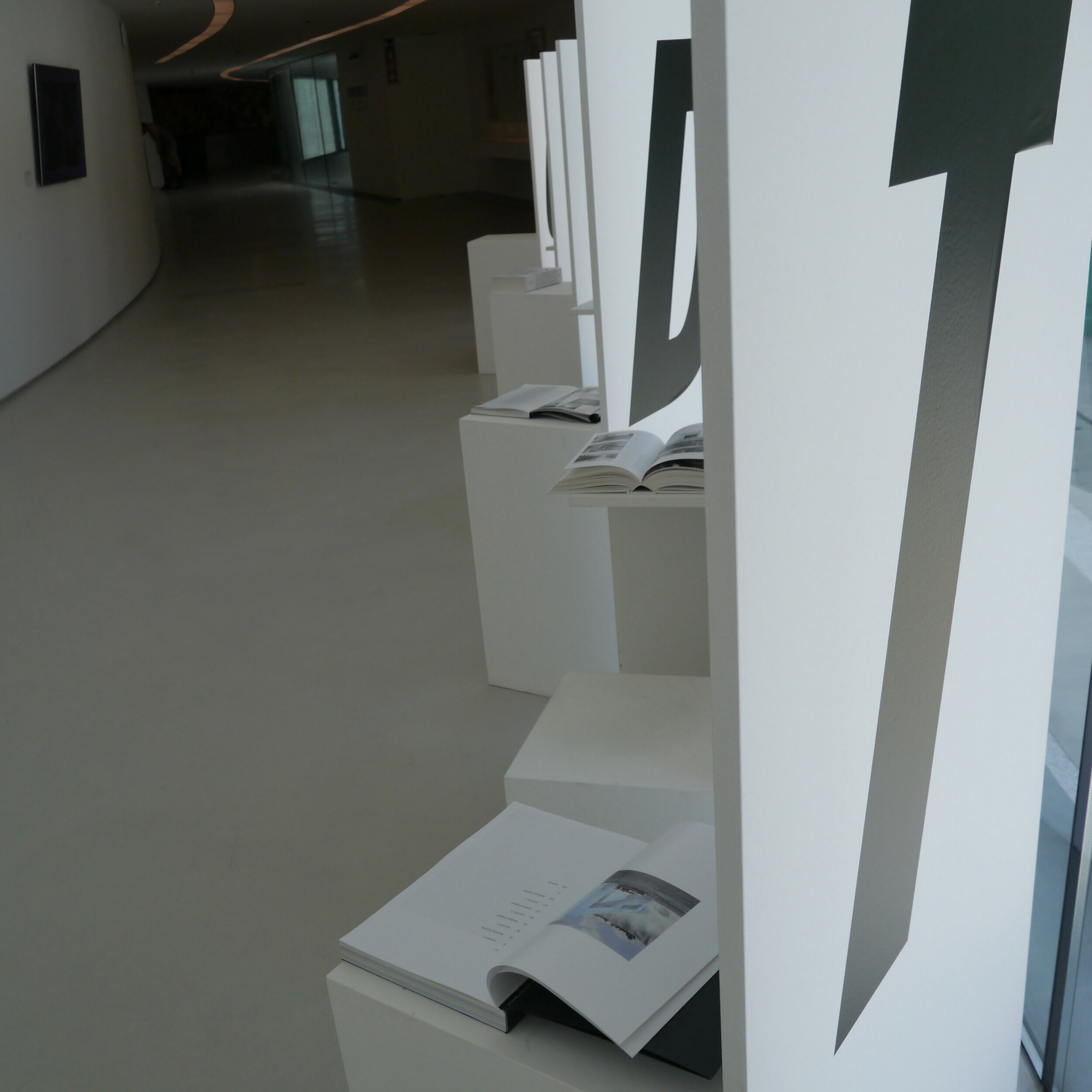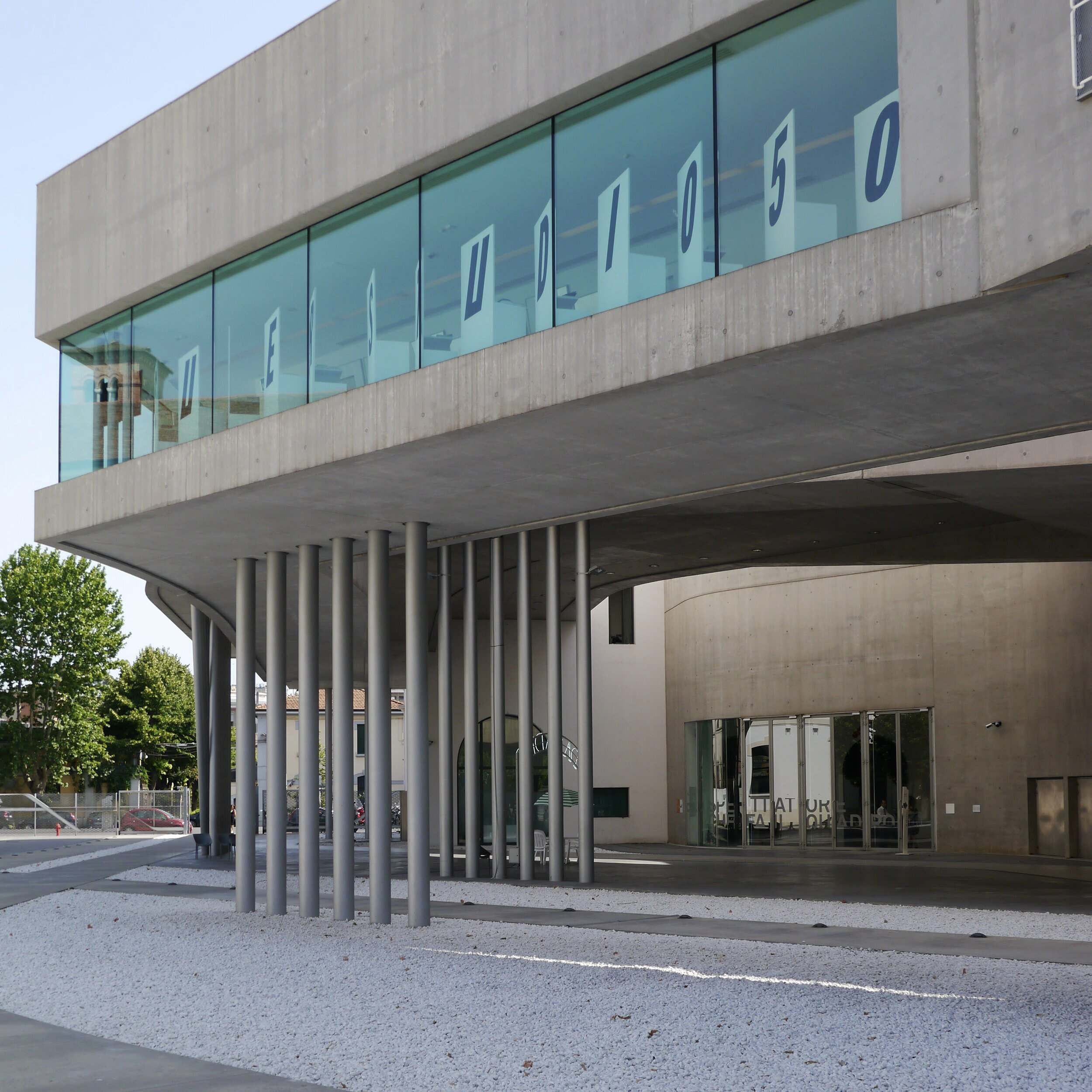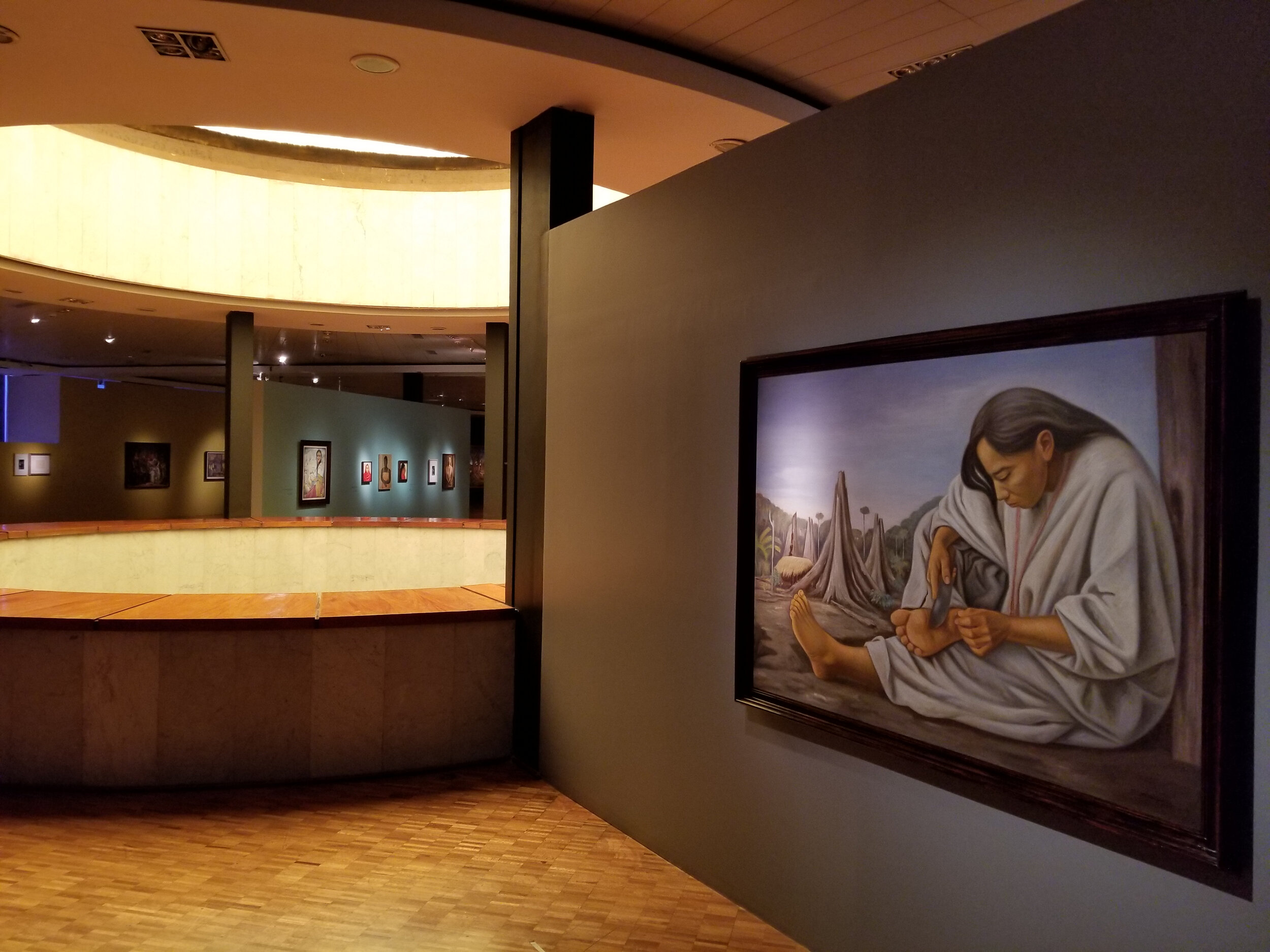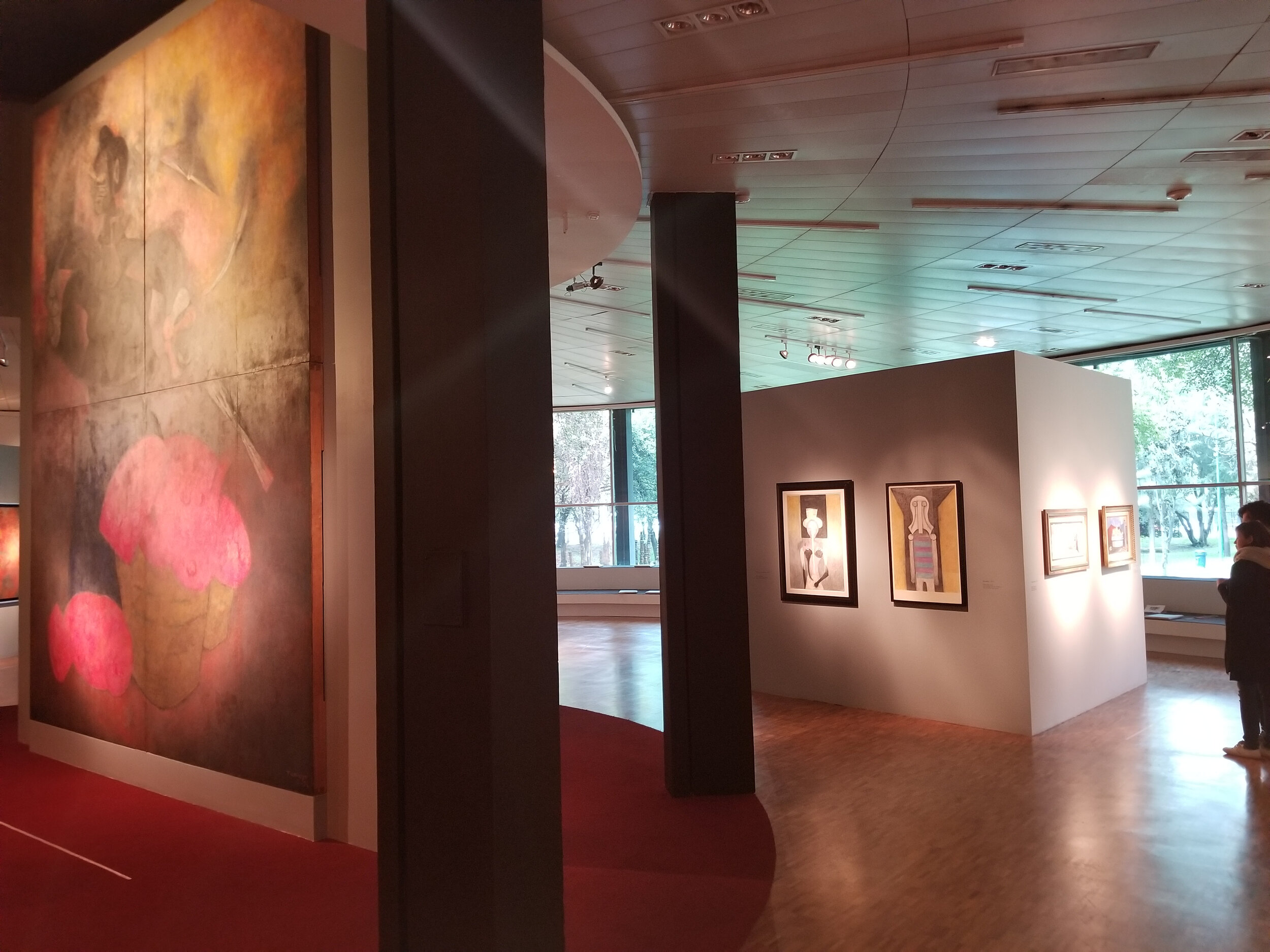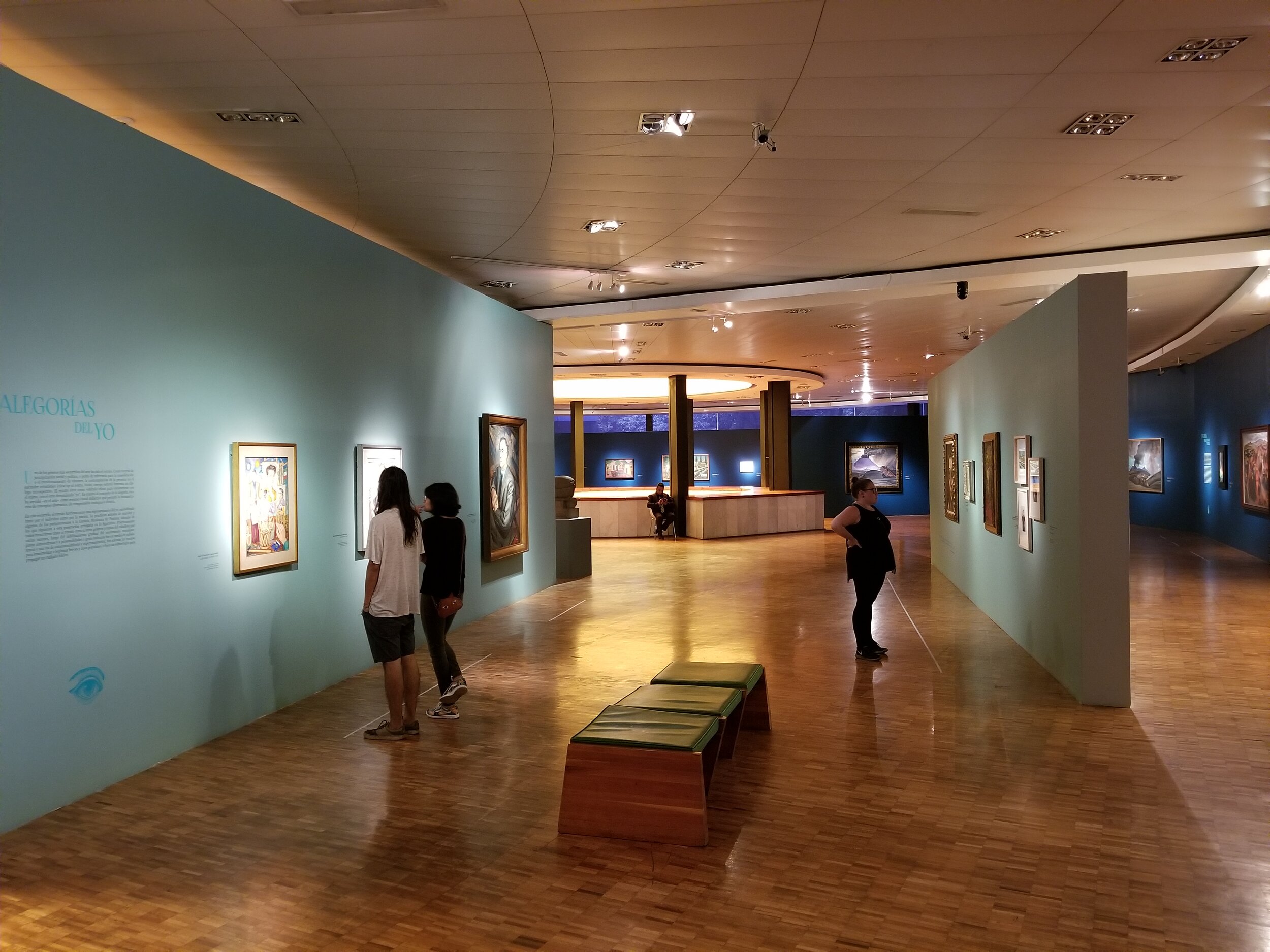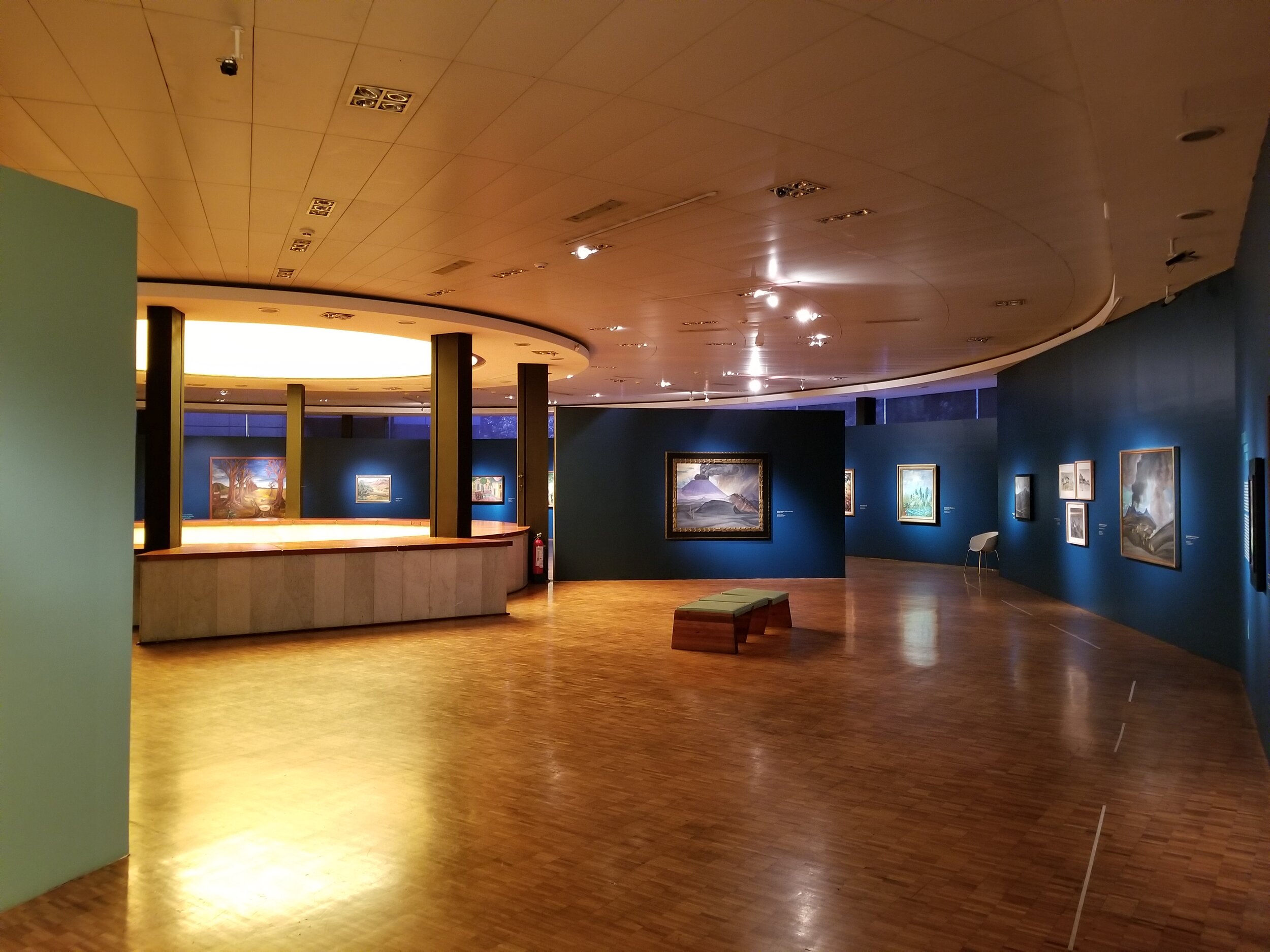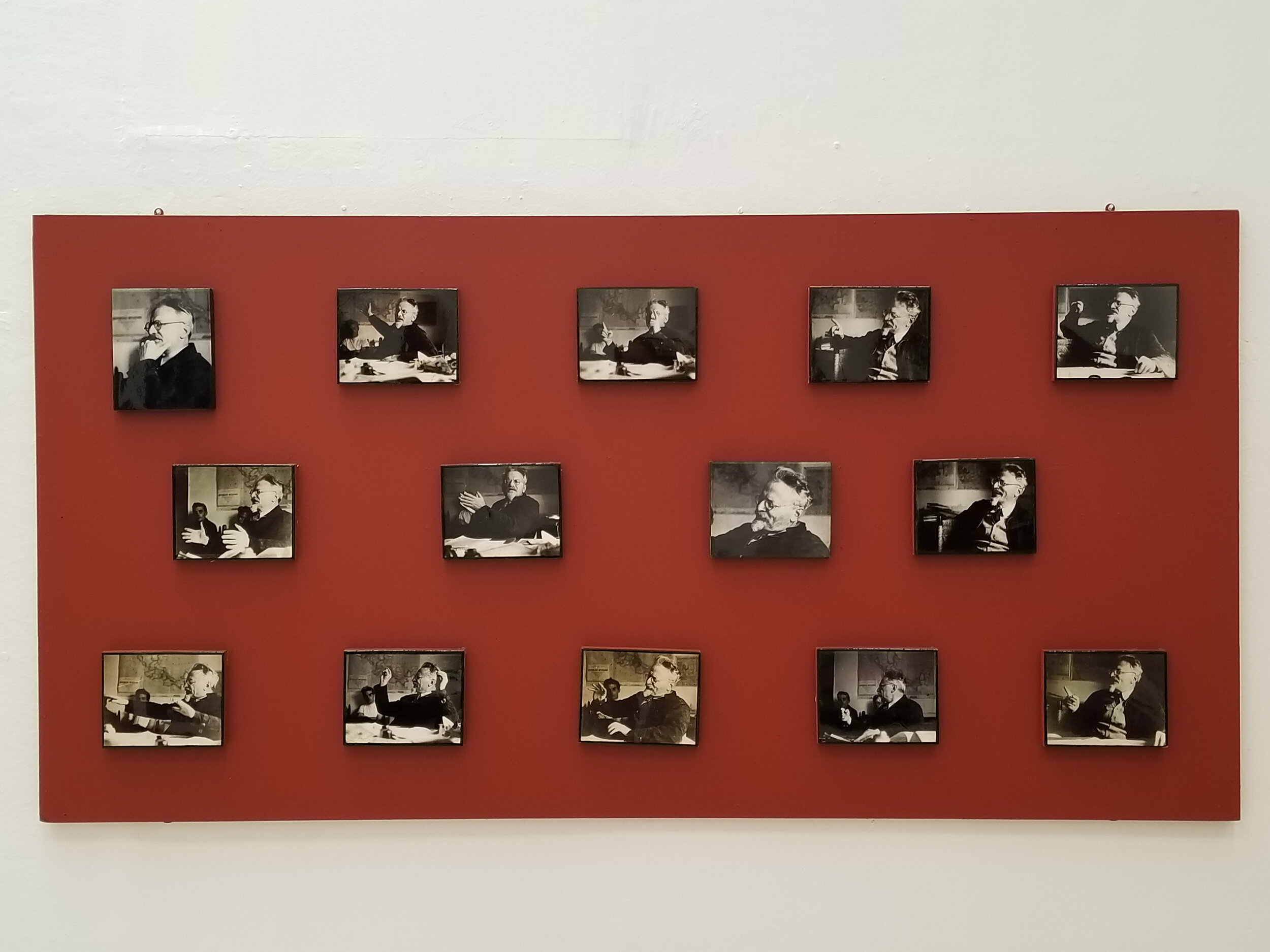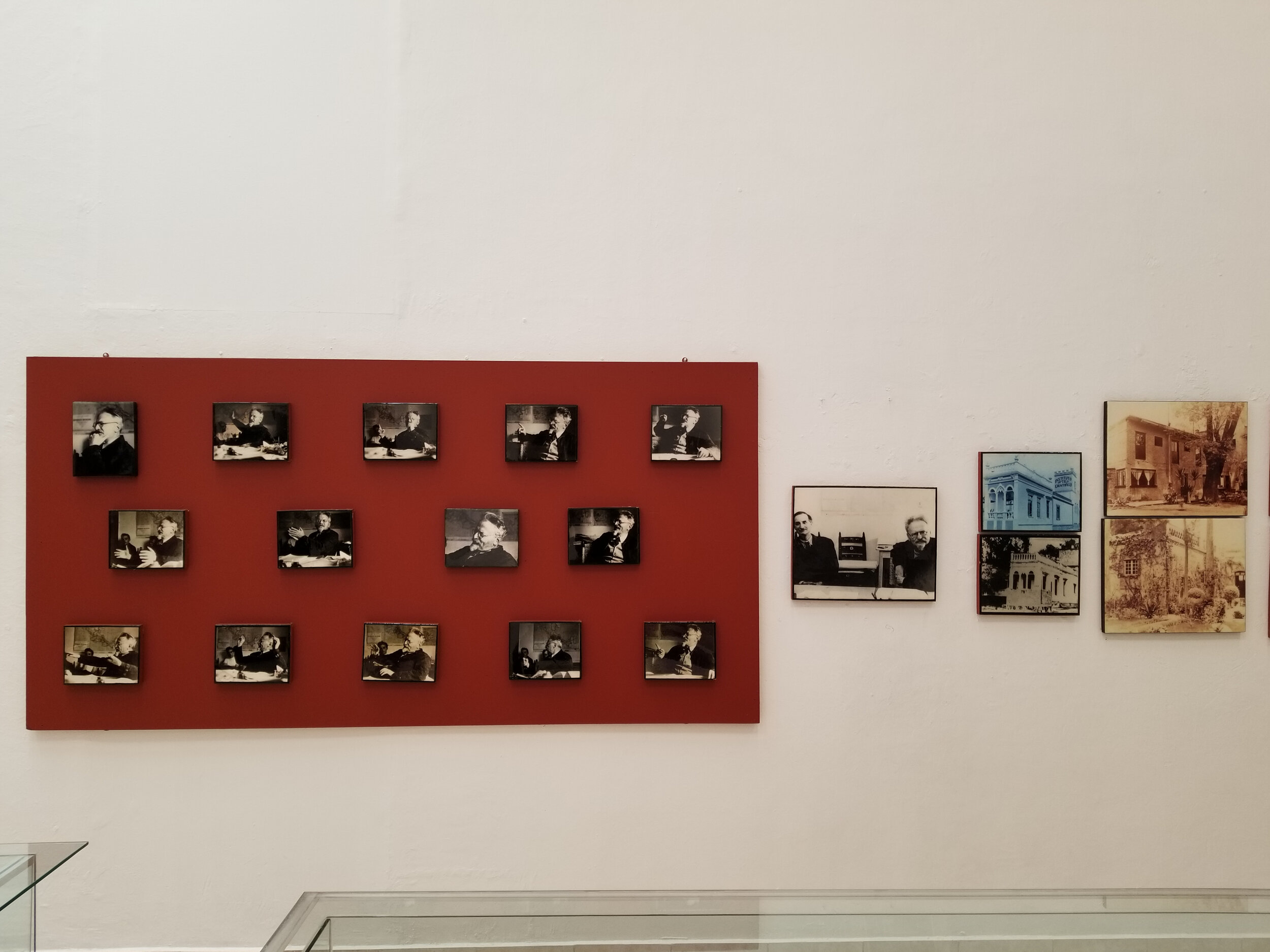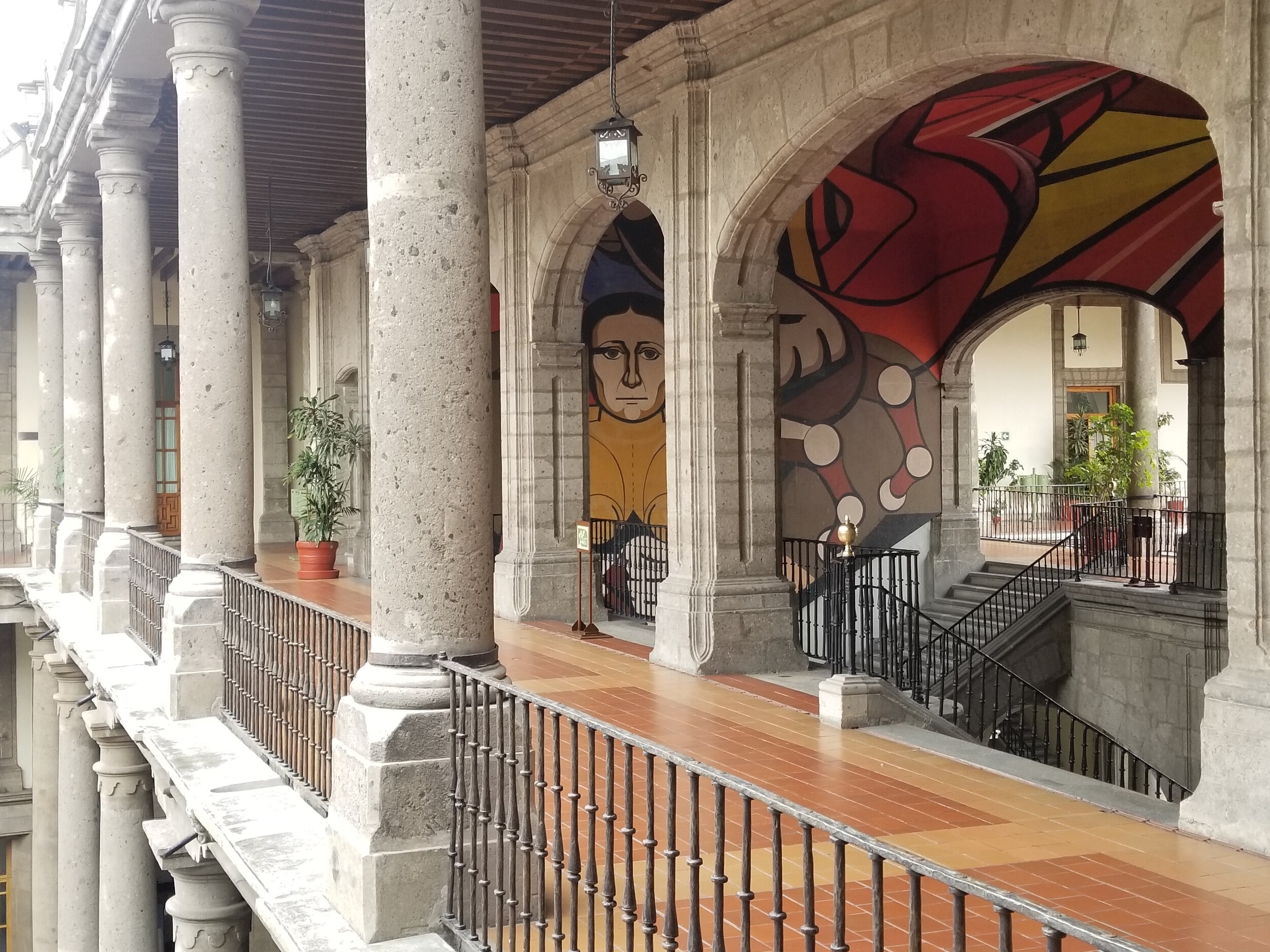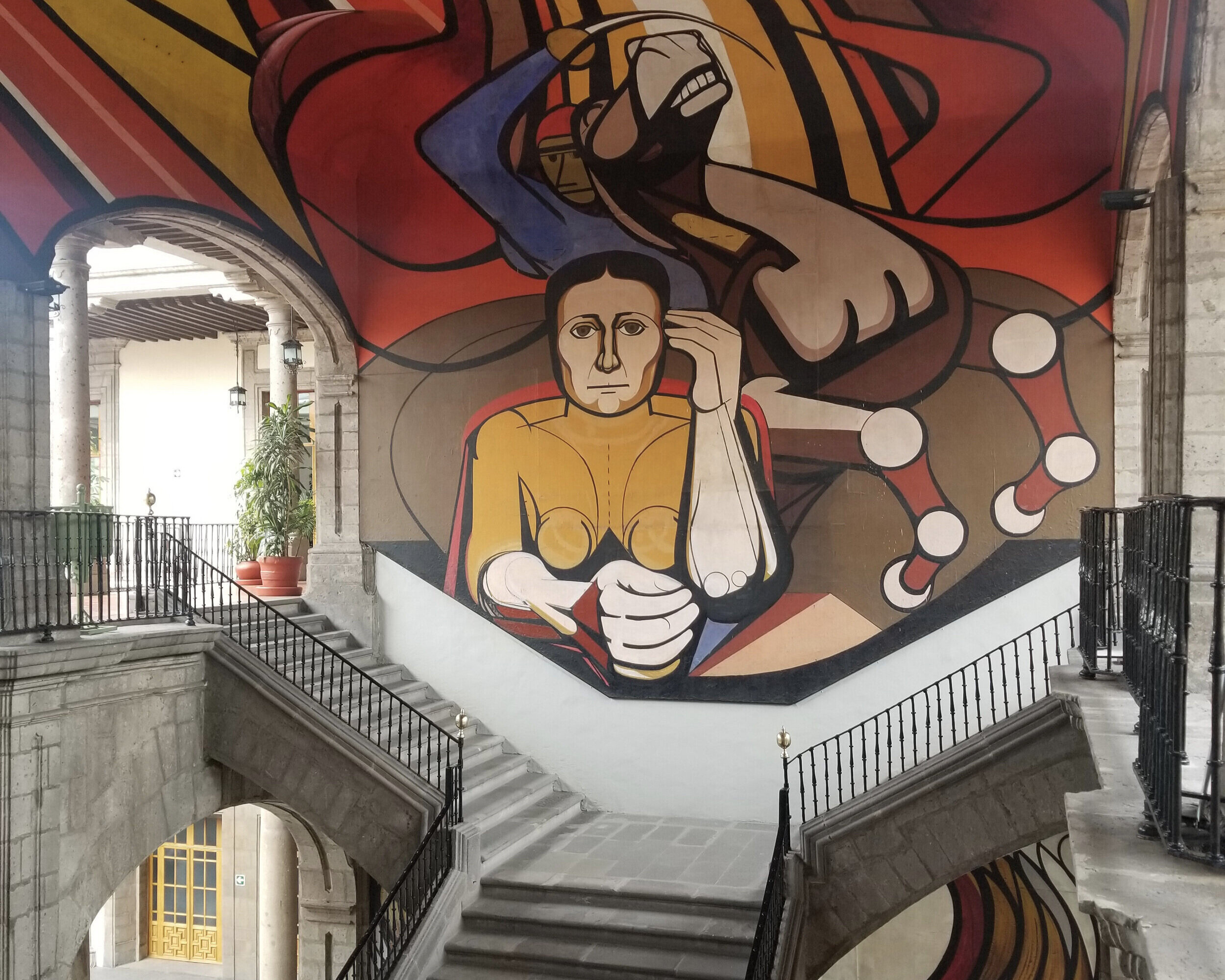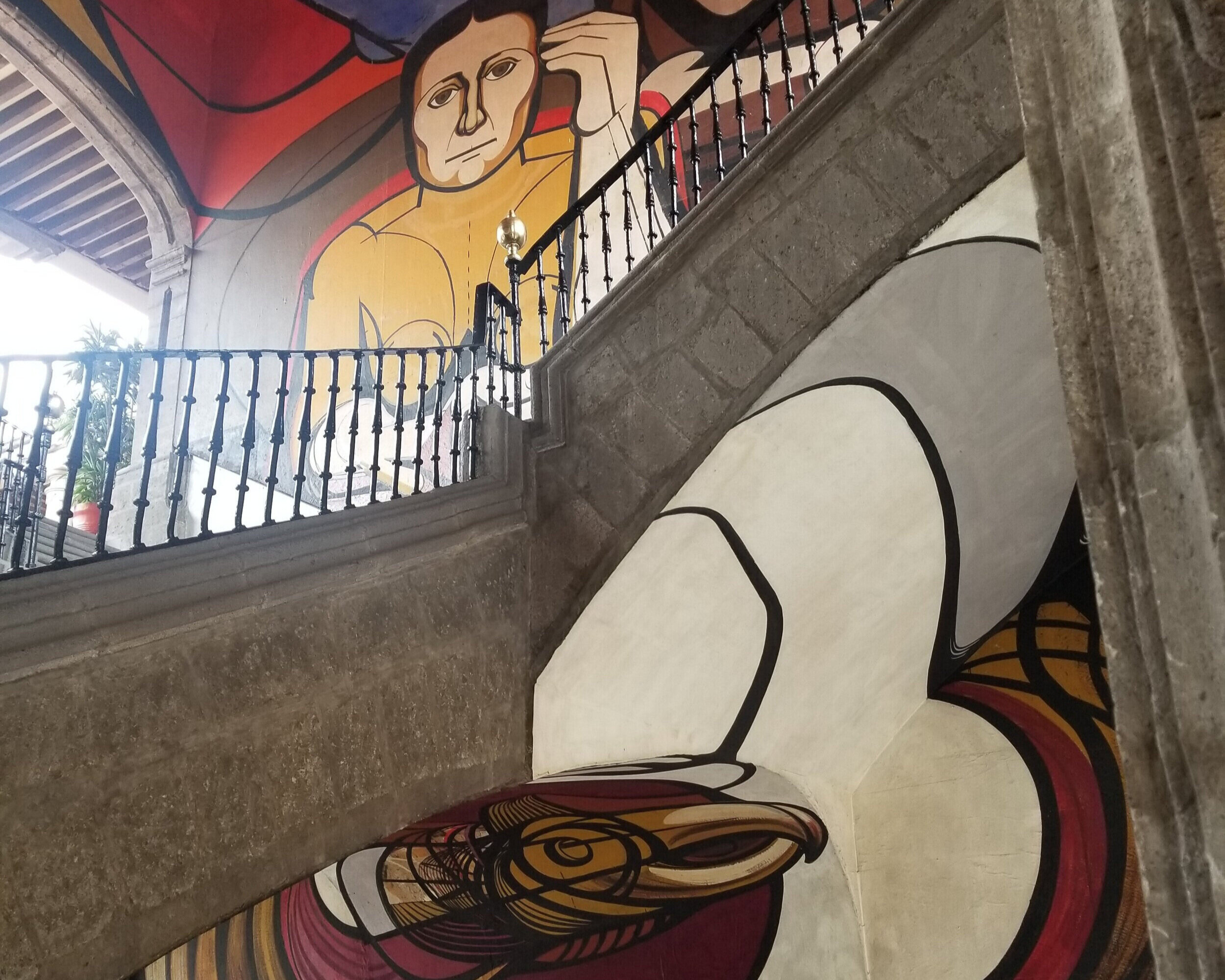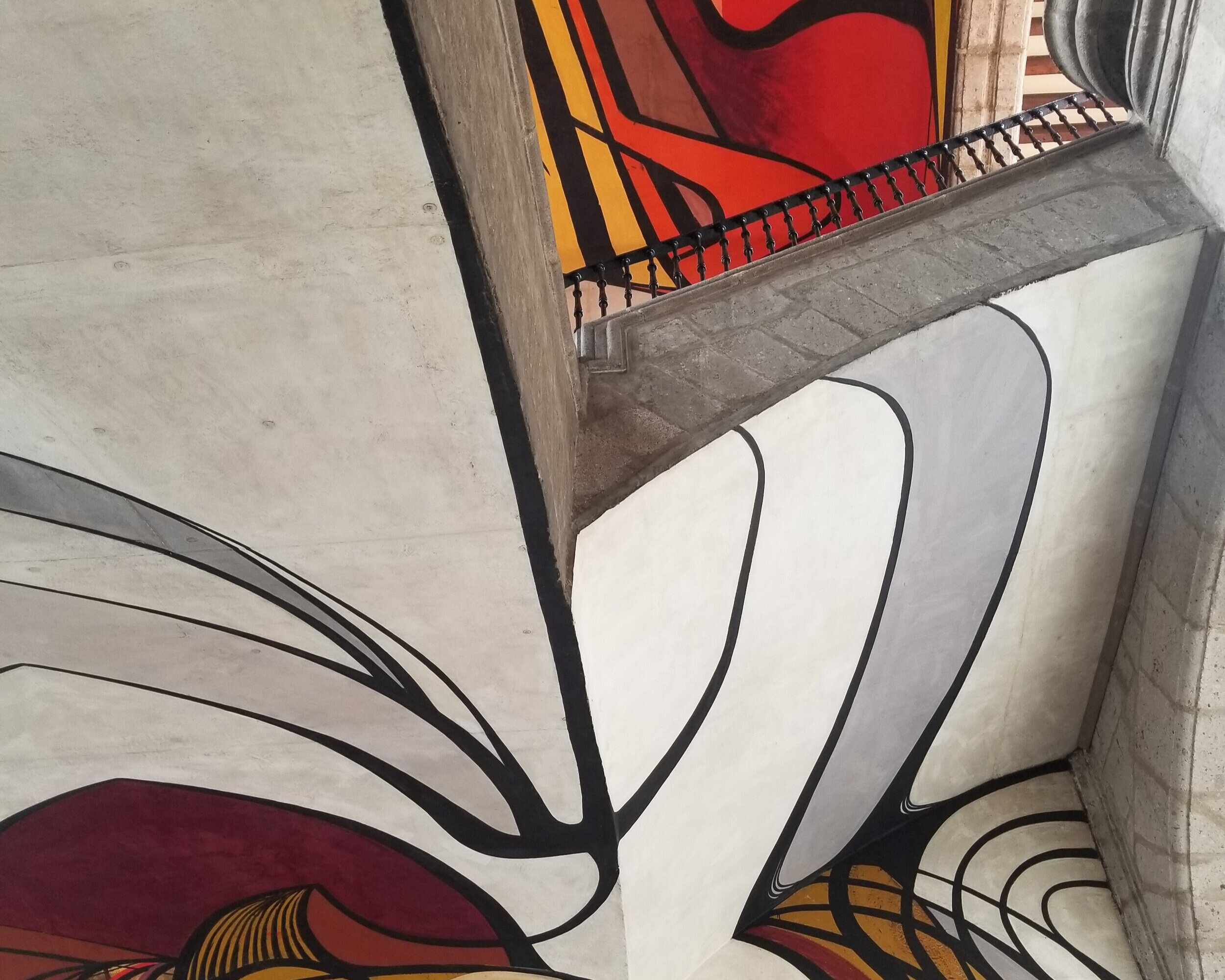This essay was started in 2016 and considers questions of experience and meaning while in Rome and Seattle. The current context gives me the time to complete this thought.
________________________
Fluid surfaces in a fluid world. The first time I visited Rome was in 1995 as part of the University of Washington Rome Program (Astra Zarina). This was a meaningful and deep experience in my growth as a designer and person. I soaked in the contemporary urban life and the deep layers of roman history. I found during this first experience that the Baroque did not resonate with me as I drifted more toward the deep roman layers of culture and space. During the interim years prior to my next visit I took the Performance of our Interiors & Exteriors course at Parsons The New School for Design in 2009. (Mark Rakatansky) Part of this course investigated the Baroque and how it informs contemporary theory providing me with critical connections and insight. An academic study which focused attention on design in which:
The experience of bodies in space results in and from the performative interiority of design - The way design is interior to physical space and interior to social culture - and the ways, just as with actors, that those social and psychological interior states are drawn forth and made evident and vivid through their reactions to various other interior and exterior characters and characteristics. (Rakatansky)
I also think fourteen years of practice and further study provided a more fertile place within my body for this study to resonate.
My return to Rome in 2016 provided me the opportunity to (re)visit the Baroque city of Rome. If I am being honest with myself, I was truly visiting these spaces and works for the first time even though I experienced them back in 1995. On this trip, I dedicated time and attention in each space to experience the various interior and exterior characters and characteristics. In short, I was fully present in the the space and within myself.
A series of thoughts on Light, Surface and Threshold were generated from these experiences. Some were not experienced in ‘classically’ defined Baroque spaces, however, they work as way points along the thread of this experience and insight into the performative interiority of design.
Aperture
The connection between light and surface is intrinsic to our experience of the world and can be argued as the key definition of architecture and space. As I walk into the domes of Rome important questions of light are ever present. I find a quiet spot within the body of the space and breathe. In time with this breathing my mind began to quiet with my body becoming more prominent. The touch of cool stone and air. An oasis from the summer heat emerged. A falling heart rate matching a calming mind. Closing my eyes to aid the (re)calibration of my vision to the new light conditions foregrounded my other senses and reduced the primacy of visual perception. These moments of visual and mental calm provided needed white space. When I did (re)open my eyes I was prepared to see. I spent the next moments in the space breathing it all in. A key characteristic of the Baroque was observed. The fluid geometry and surfaces of the Baroque were evident and well comprehended through my theoretical base. The aspect that I now experienced was how the direction and the calibration of the light source influenced the experience and gathered in me a deeper understanding of Baroque space.

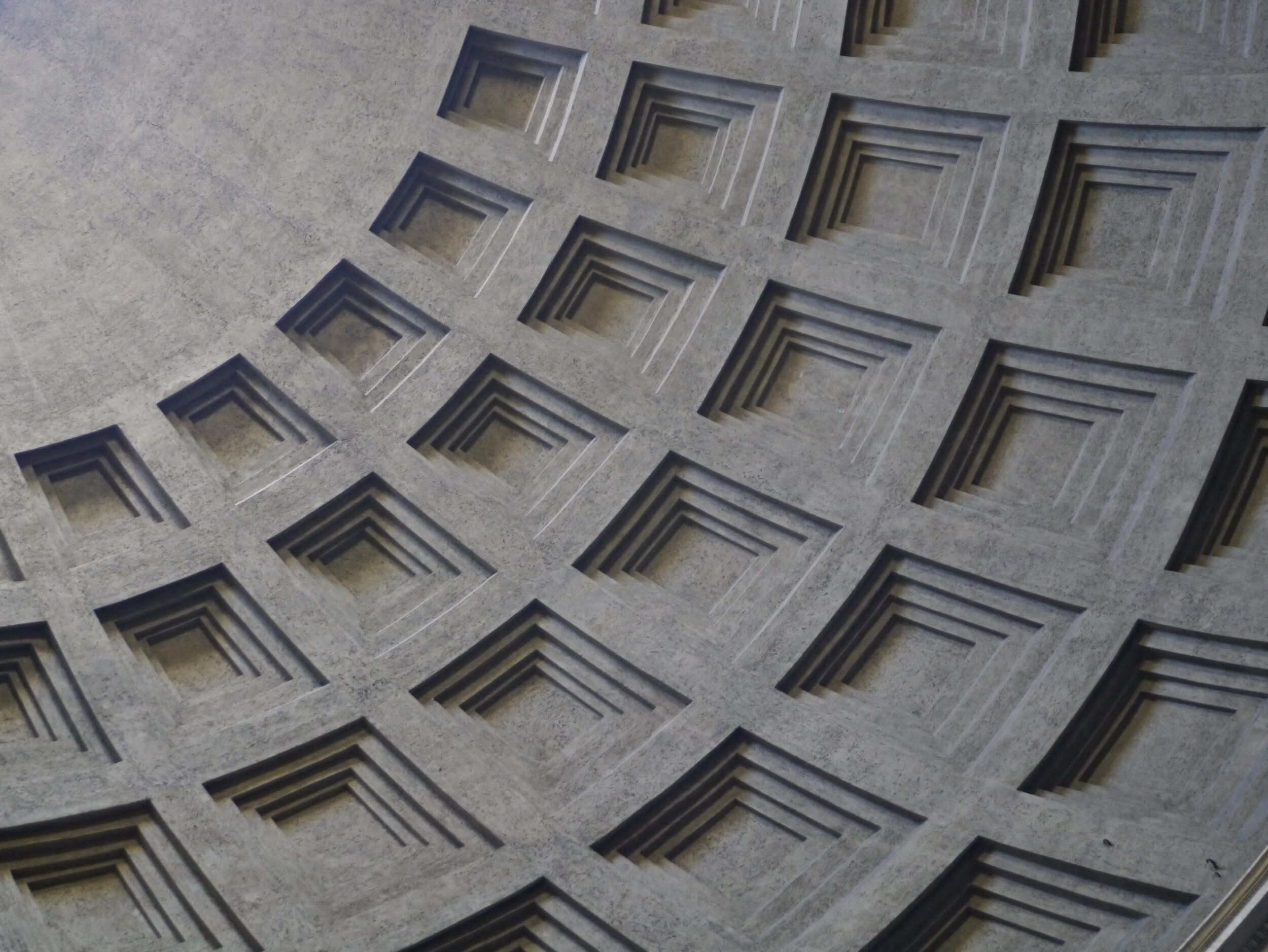

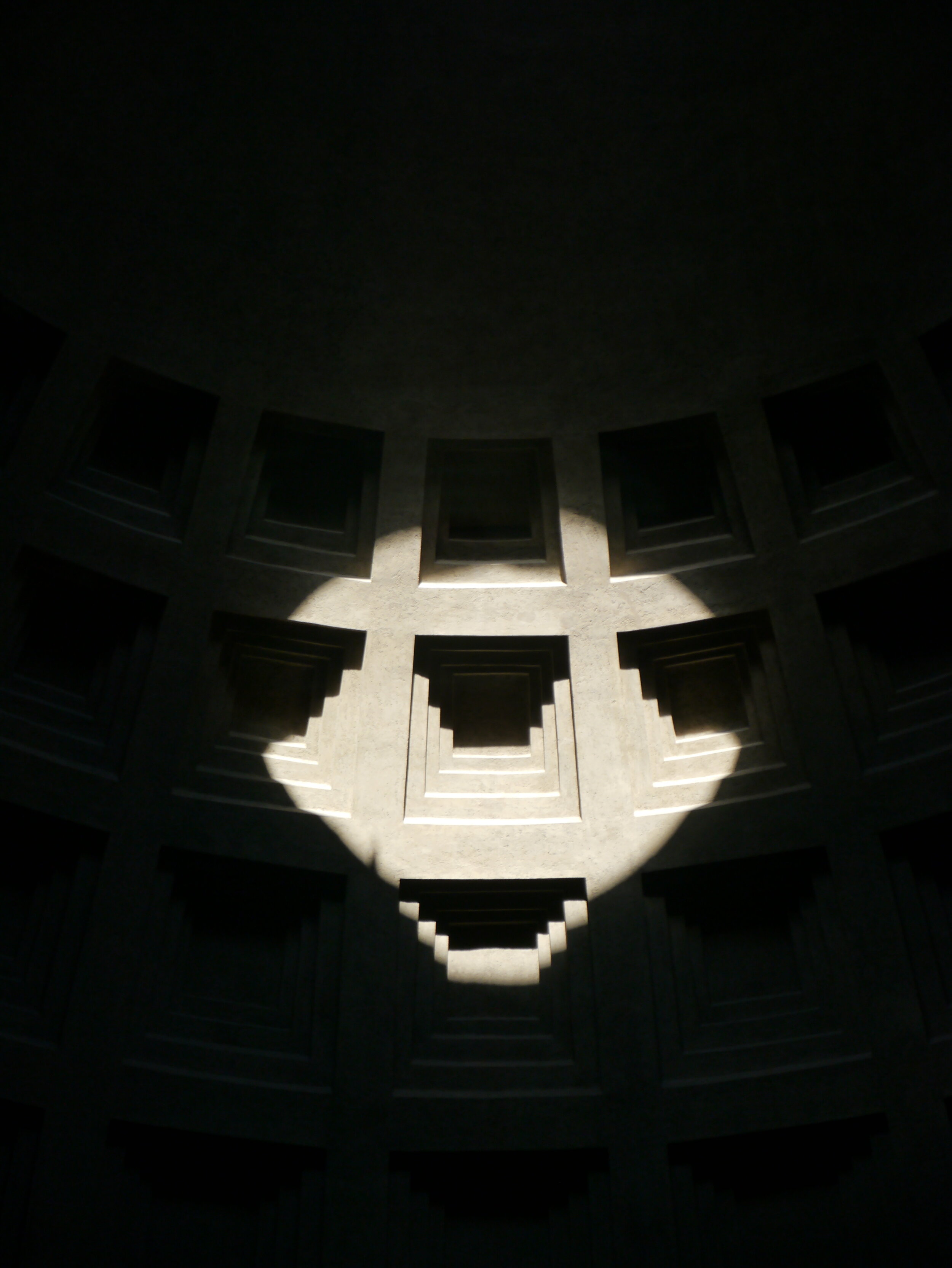
The antiquity example I experienced was the Pantheon. The single aperture in the dome apex defines the visual experience. The singular aspect of the light is architecturally responded to through crisp form and shape. There is nothing subtle about the light and the architecture and geometric volumes follow with sharp and repetitive forms. With the directional nature and continual motion of light the formal geometry does not remain static. On the contrary the moving direct light produces a fluidity of space and surface through the direct motion of light relative to the fixed concrete geometries.
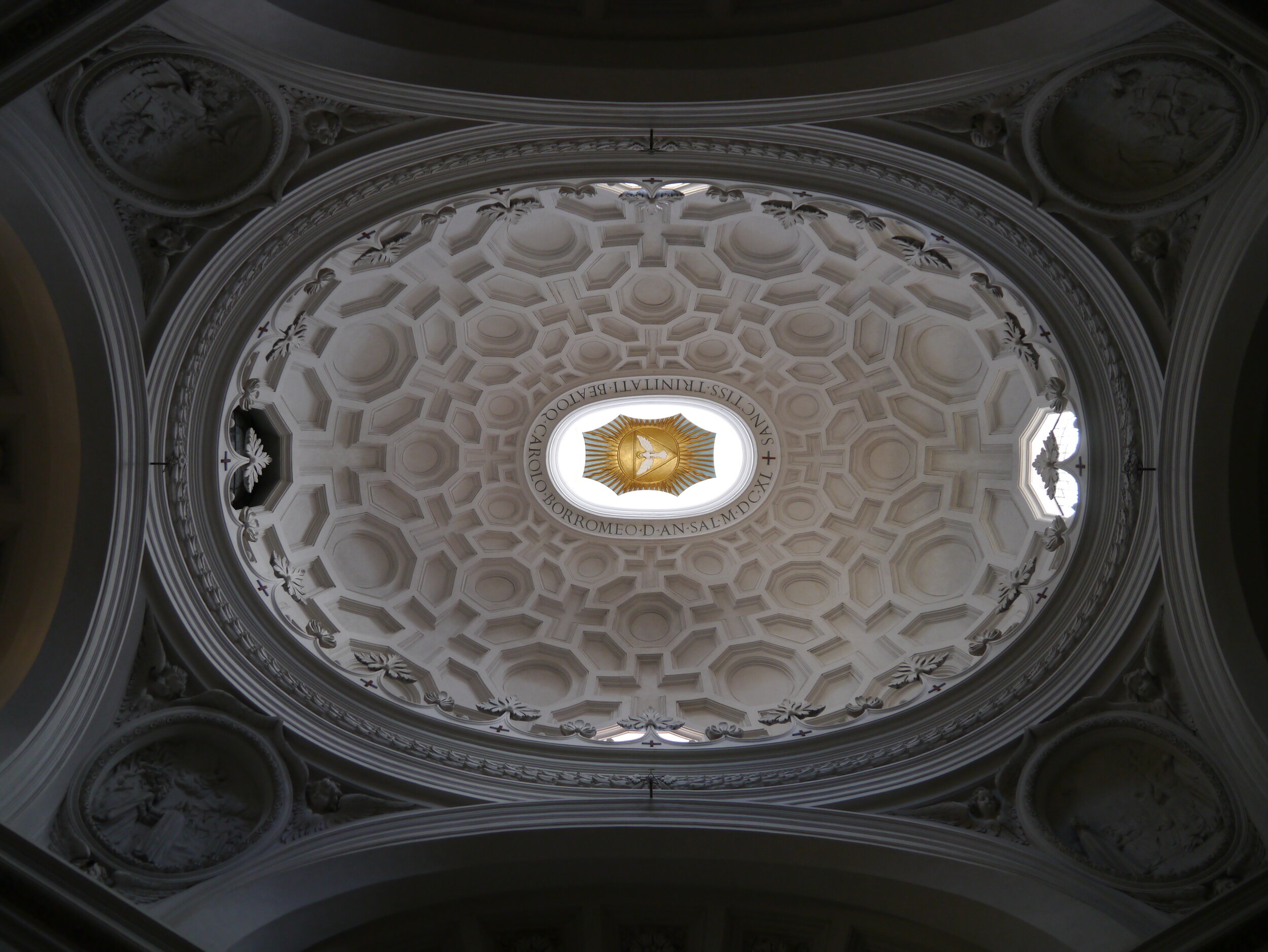
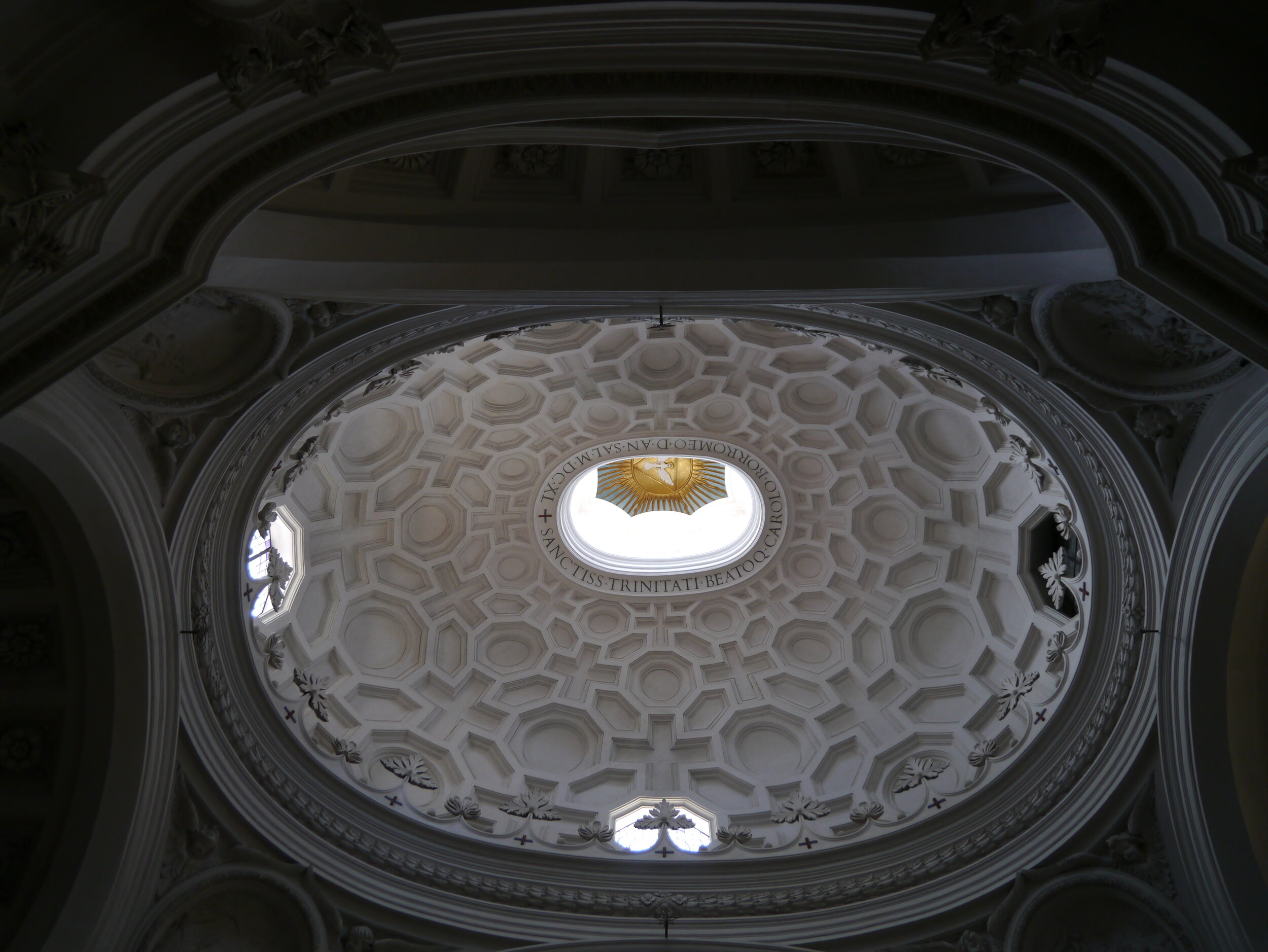
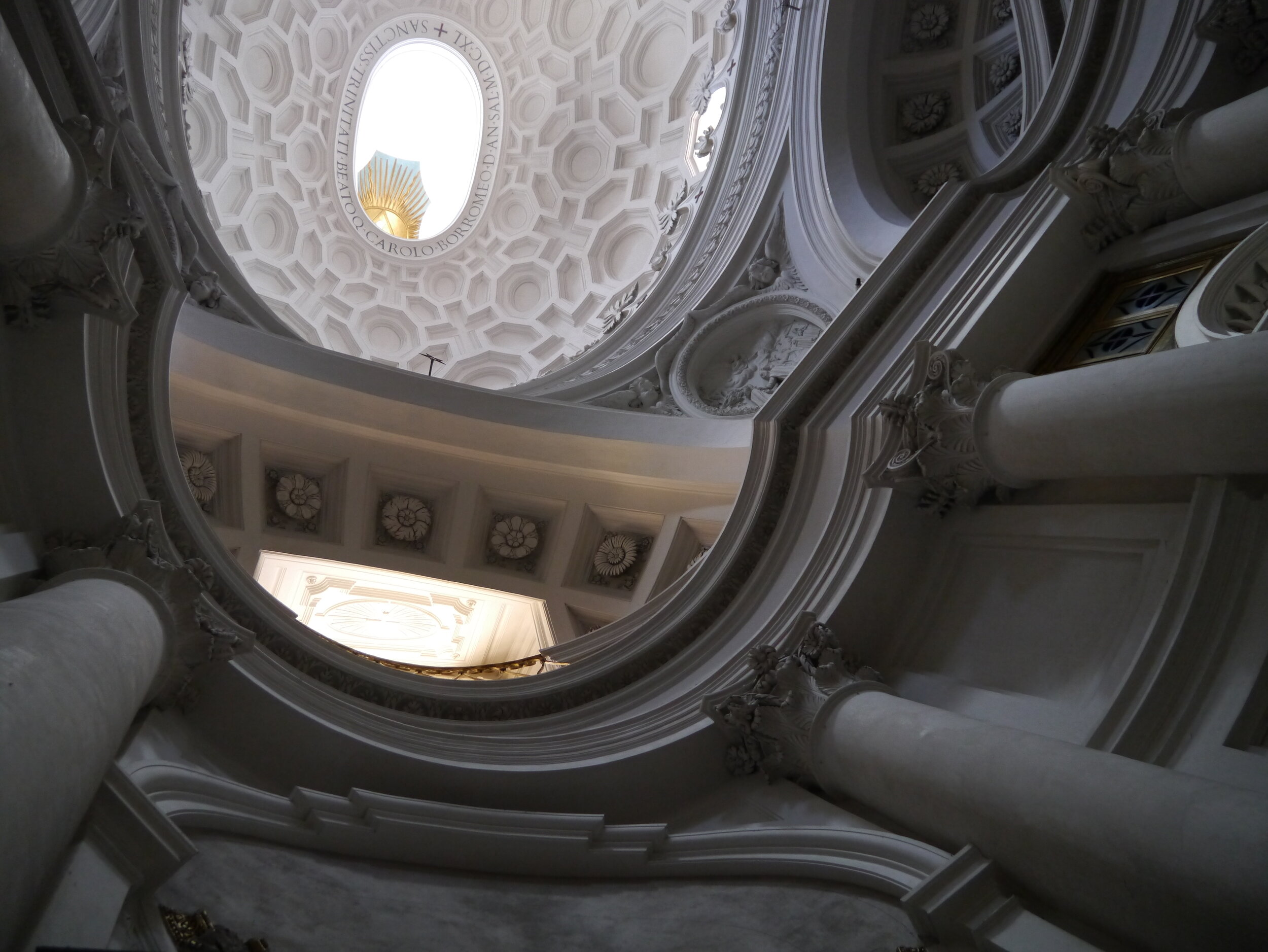
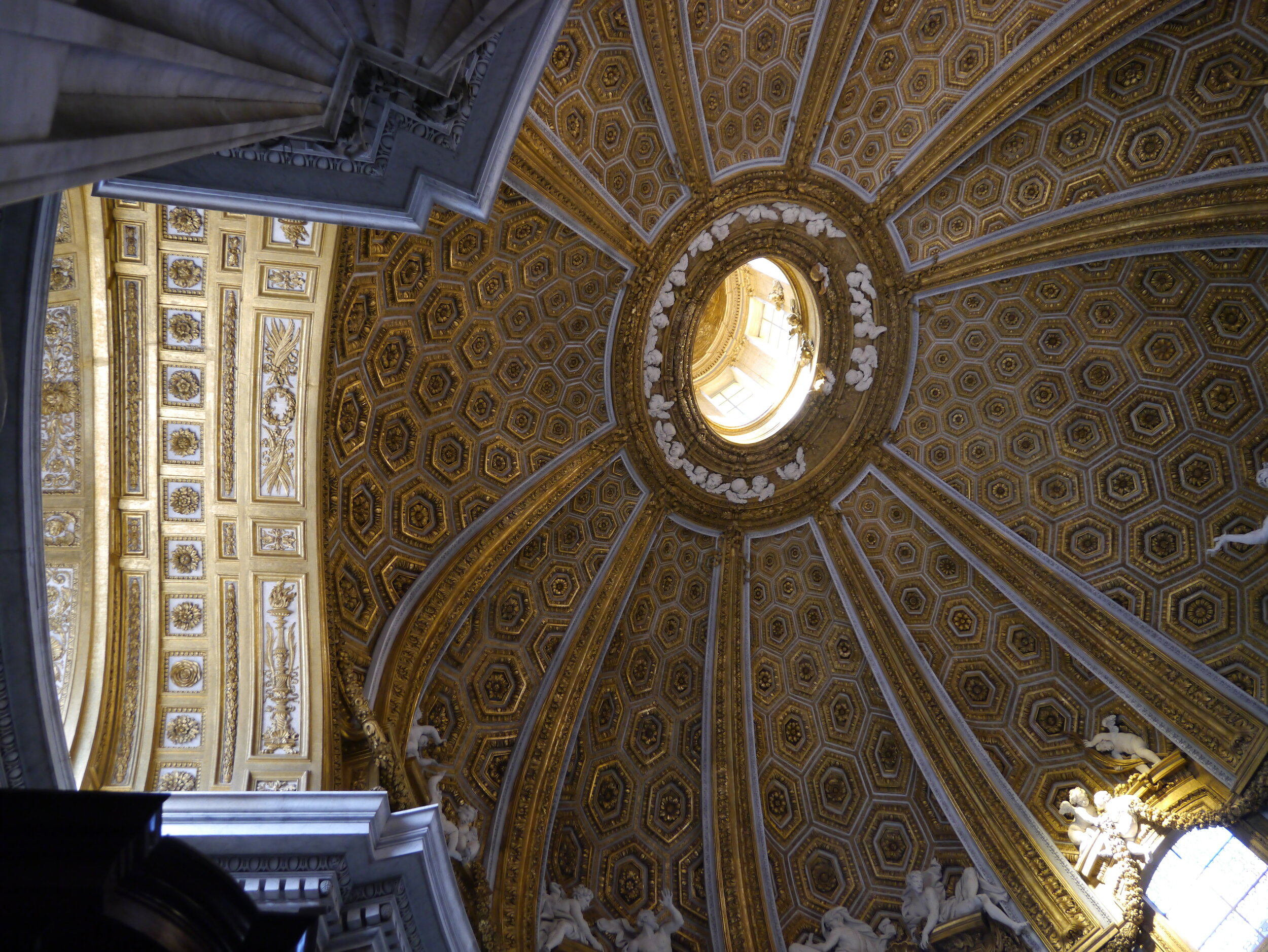
The consciously designed Baroque spaces of Bernini and Borromini approach light with a distinctly different strategy. Sitting and breathing in San Carlo alle Quattro Fontane (Borromini) and Sant’Andrea al Quirinale (Bernini) I experienced the undulating surface geometry that epitomizes Baroque design. The longer I rested in my oasis new ways of seeing the space and how light was designed to render these surfaces was revealed. Both Bernini and Borromini used clearly defined sources of light to define surfaces similar to the Pantheon, however, with a distinctly different result. The aperture was set to cast a field of light across the directly adjacent surfaces to effectively fill a secondary space with light. This developed a clear field of differentiated bright and shaded surfaces that modeled the fluid geometric surfaces. Second, this configuration established primary, secondary, and tertiary lit spaces across the focal length of the vertical space to establish a depth of immense beauty and height. Yes, there is direct light cast across the dome at particular moments, however, the principle effect of the aperture is to illuminate the direct adjacent surfaces of a secondary vault or the drum of the cupola to generate legible fluid surfaces in a field of contrasted vaults. This foregrounds the dynamic fluid movement of the concrete form with the light as the source of stability and calm.
Surface
My time with two Bernini sculptures illustrated the mutual definition of light and surface while taking my breath away. Both works are situated in side chapels with singular diffused sources of natural daylight. Either through a cupola with a deep drum or a side window set in a deep surround, a singular reflected light source to illuminate the stone was produced. Looking at the figures one can comprehend the nature of the light and through the design of the light one is able to comprehend the body. This is not a sharp definition of light and surface but both working to hone and remove sharp contrast to reveal subtle character and characteristics.
A fold. A breath. A touch. A moment held - prior to a new reality borne by us all.
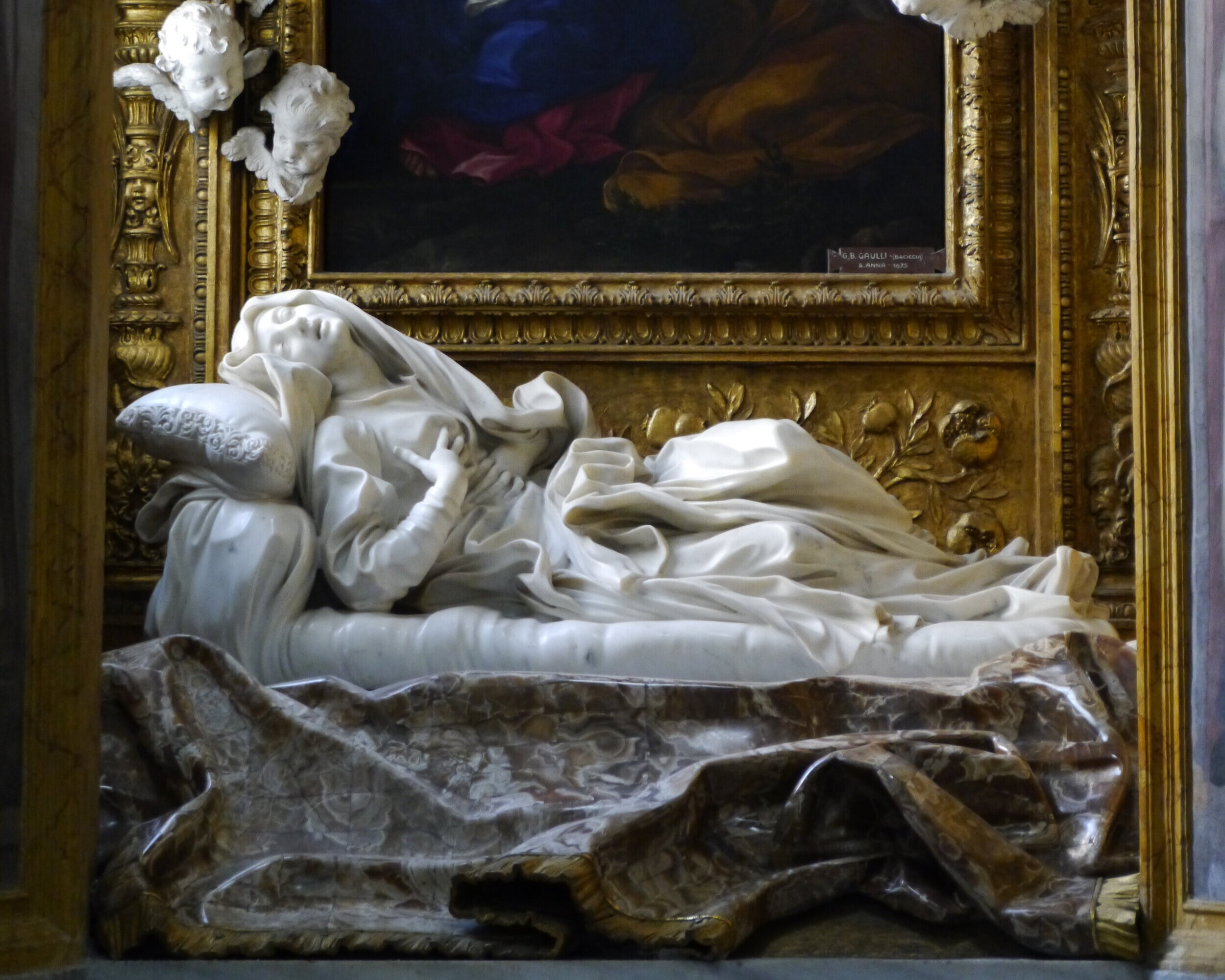
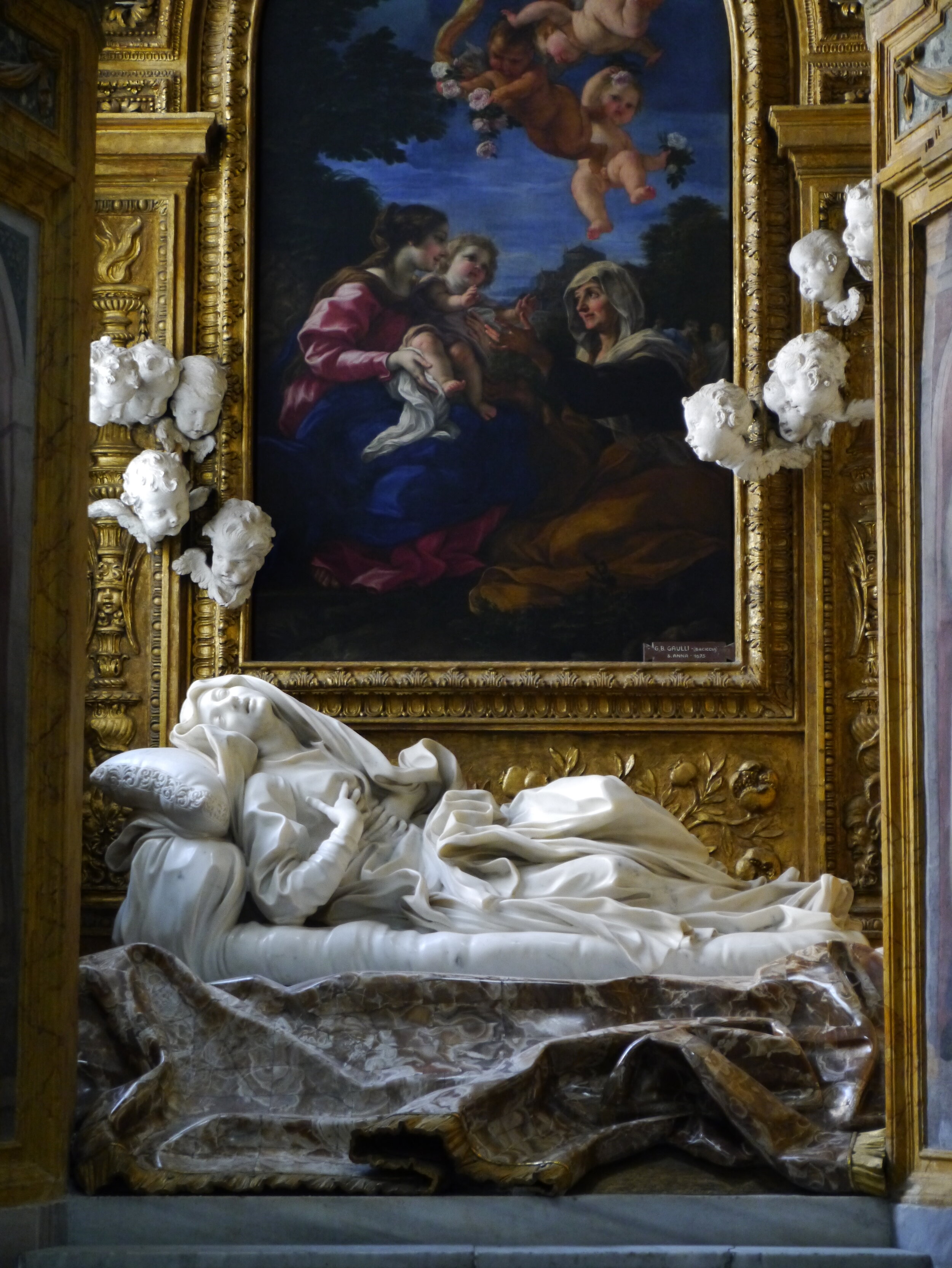
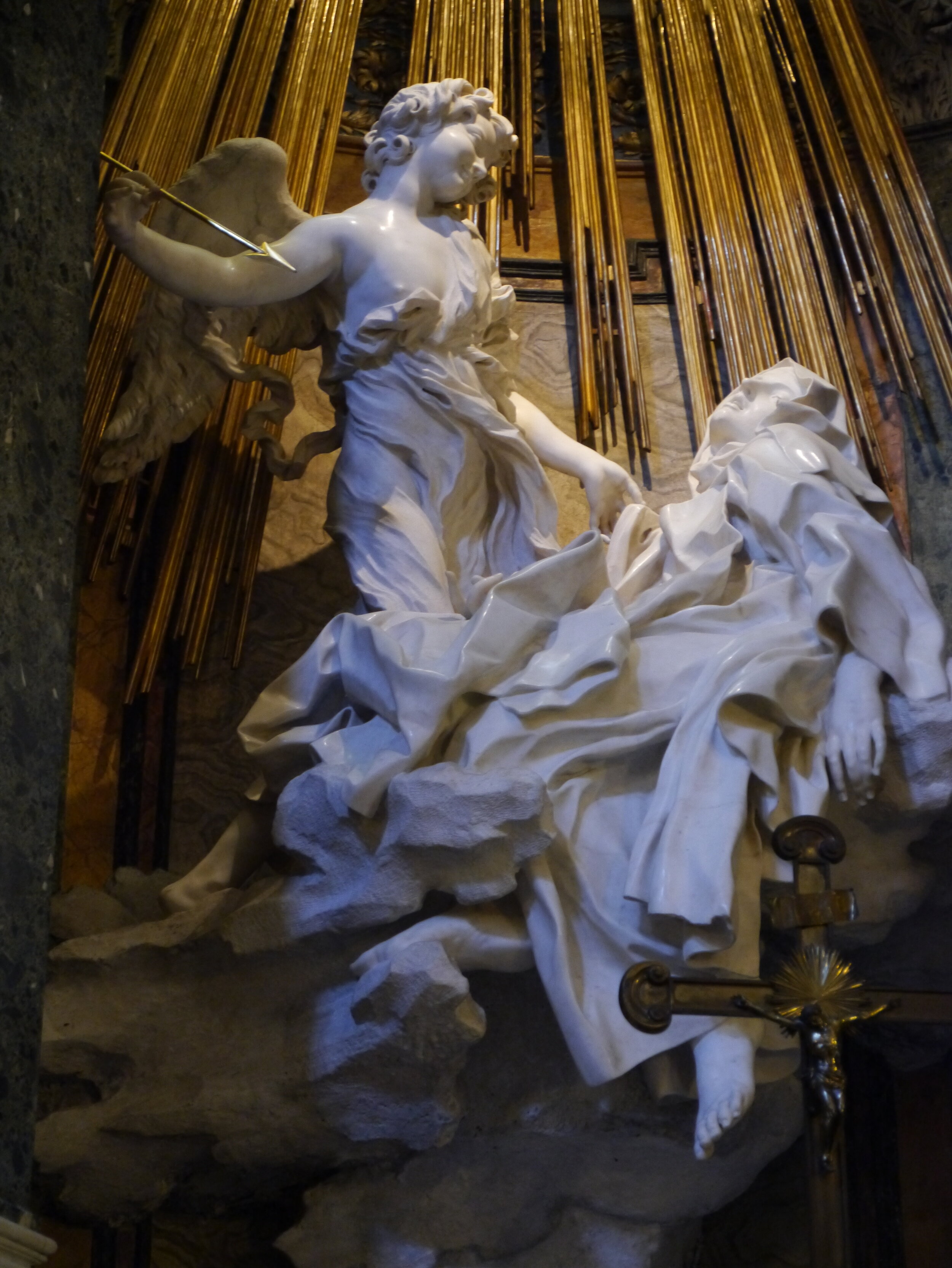
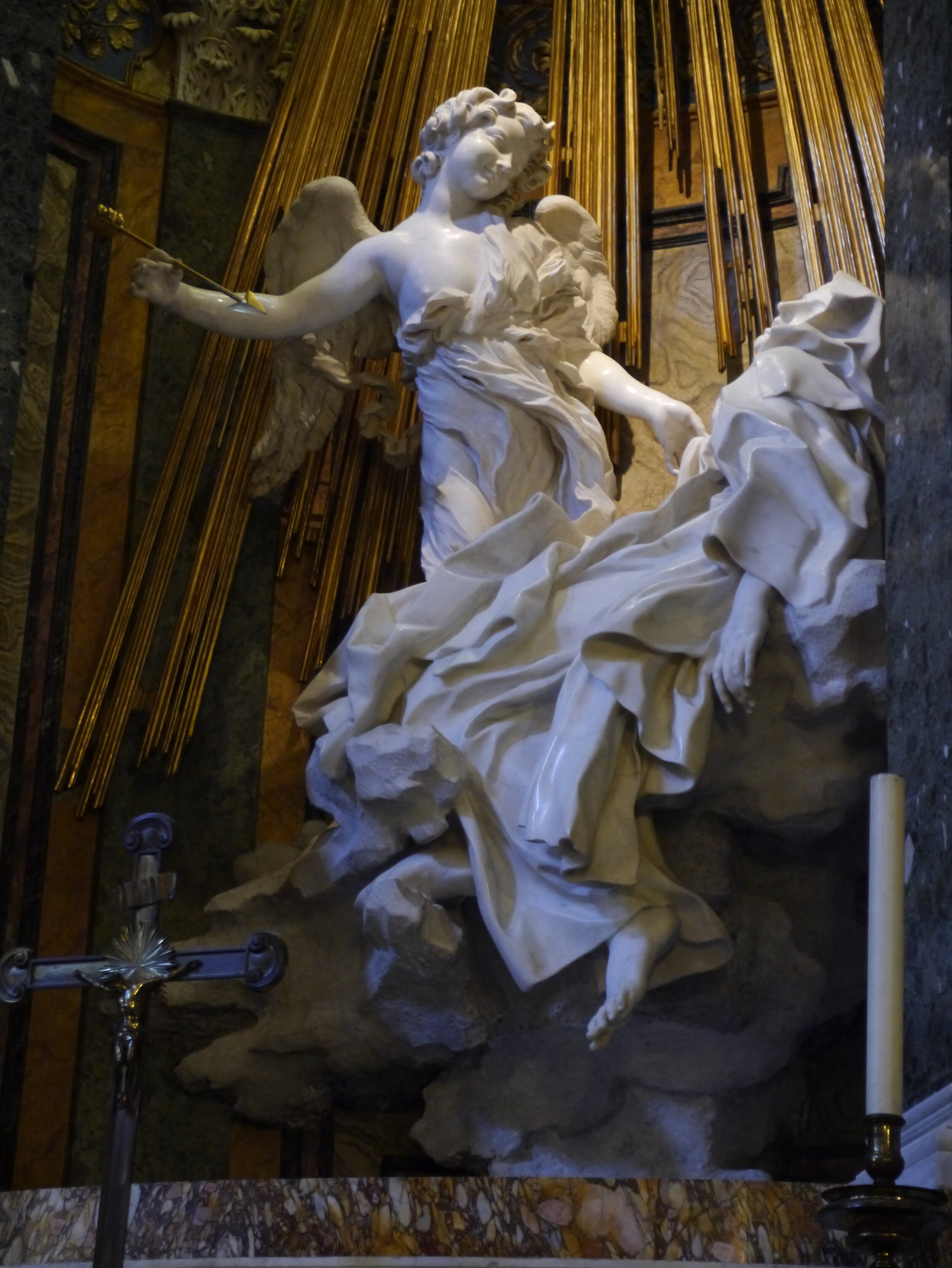
Blessed Ludovica Albertoni (Bernini) in Chiesa di San Francesco a Ripa
Ecstasy of Santa Teresa of Ávila, (Bernini) in Santa Maria della Vittoria
Threshold
A visit to Skyspace - Light Reign (Turrell) in 2016 at The Henry Art Gallery (University of Washington) brought me back to the small domes of Rome. Crossing the bridge I entered a space I thought I knew. A space where I thought I knew what to expect. A jewel of a contemplation space. Crossing into the elliptical space on a bright clear day my eyes struggled to adapt to the crisp and clear space. Sitting down on the wood bench I took a deep breath. My body adjusting. A moment of disappointment flowed through me. After thinking so much about the depth of light and surface from my time in Rome a month ago the sharp line between ceiling and sky was disorientating. The edge acting as a knife between the ceiling and sky resulting in a stark binary experience. I remained. My body temperature began to rise and my eyes continued to adjust to the increased temperature and light. The space began to distort and gain depth the more my body adjusted. I resisted thoughts to move throughout the space to gain understanding and held my position. A baroque space began to materialize. An abstract space fully within the rules of geometry and proportion but presenting a new fluid reality that raised questions of stability and order. Rationally, I know the wood bench surface that I am sitting on is level and that I am sitting in an ellipse in the strictest geometric sense. The lines still begin to flow and distort. To trace a line around the space is a study in a shift in depth and perception not dissimilar to San Carlo alle Quattro Fontane. The line is there. The static relationships exist fixed by materials, however, the space within my grasp is one of movement not stasis. This is why I found the sharp line between ceiling and sky plane to be so harsh. That boundary line is never in question while all other surfaces and and materials form a more nuanced relationship to my body and experience. I decide to move. I moved to the other end of the space to experience the space distort and shift. A stunning transformation. It was while sitting back down that I realized I was questioning the wrong boundary. It is not the boundary of ceiling and sky I should be questioning it should be the boundary with the ground. This new perspective shifted my concept of where I was. I was not on the ground looking up, as I was in Rome. I was sitting in the oculus. I was inside the same type of space far above my head I was so fascinated with in Rome but could not occupy. I was in the threshold between surface and sky so important to Bernini and Borromini as they modeled their fluid surfaces. The proportions of the cupola I was sitting in felt about right. Instead of focusing on the sharp line above I was able to experience sitting at the moment of inflection between two opening spaces. A Camera Obscura? Light Reign became a lens through which space distorted and became inverted, amplified, and projected into a new experience. Much to my surprise, on a bright sunny day in Seattle I arrived into the Baroque space I could only observe and speculate upon from a far while in Rome.
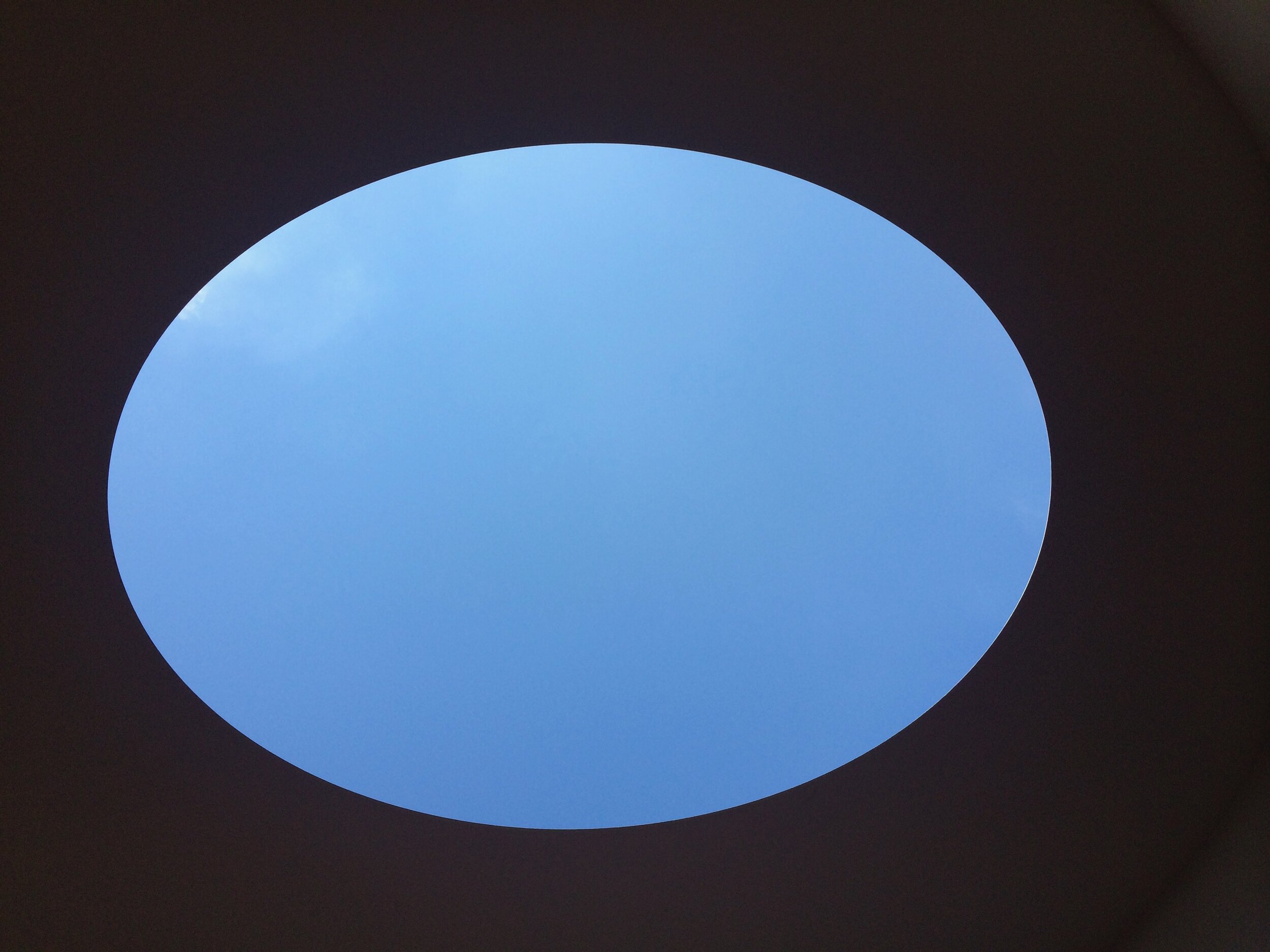



These experiences reinforce the need to continually question how I inhabit my surroundings as an act of defining how my surroundings inhabit me. Insight and creativity emerges from occupying the spaces between the limits of our body and senses toward the expanse of imagination and the possible.
Thoughts from walks through Rome and Seattle.
All images by author


